
Beyond the Middle East and Yields: How the Wealth Management Industry navigates turmoil
Since September, there have been two issues dominating markets: high yields and geopolitics. In the past few weeks, both have been exhausted.
The seesaw effect: falling equities amid ever-rising inflation
The strict definition of a ‘Bear Market’ is one where an index has dropped more than 20% from its high point. In an age of algo-driven volatility, which amplifies upward and downward movements, it’s probably safe to discard that definition. Instead, we could define a bear market as ‘the general tendency to ‘sell on strength’, rather than ‘buy on weakness, a direct result of general investor pessimism. There’s certainly a lot of that going on these days. Equity rebounds are almost immediately followed by sharp selloffs. The fact that bond prices have also been falling throughout makes the bear market more ‘systemic’, and the lives of asset allocators that much more difficult.
When will this end?
Historically, Bear Markets last for a few months to a couple of years. This time around, it is actually up to the sixteen officers at the Fed who decide the speed and velocity of quantitative tightening. The quicker tightening slows, or ends, the quicker we will see an end to volatility and the return of market bullishness. Note that we didn’t say interest rates. Although higher cost of money will have a longer-term economic impact, it is the immediate retraction of liquidity from markets that is affecting risk assets. And it seems that the Fed continues to be the ‘Only Game in Town’.
The good news is that this loosening-tightening cycle is well defined. The central bank increases money supply and spurs economic and financial activity. At some point (and that could be a long while), inflation occurs. That prompts the central bank to start tightening aggressively. The markets are the first to suffer. High inflation, high rates and weaker markets prompt an economic slowdown soon after. At some point, the recession (financial or economic) becomes more important than inflation. Either because numbers are too terrible or because inflation has started to stabilise. This prompts central banks to start loosening again, and a new cycle begins.

So, when will the Bear Market end?
If the Fed is the only game in town, then a dovish Fed is the necessary condition for risk assets to thrive.
For the Fed It will take one of two conditions – whichever comes first.
Now, we don’t believe that supply-side inflation can really be directly controlled by the Fed. It would take an extreme crunch in American demand for the whole global product cycle to be meaningfully affected. The Fed could have changed its stance well before things turned that bad. Which means that inflation may rise or fall, independently of what the Fed does. This would make the window between Fed decisions and the fall of inflation random.
But where the Fed has power, is to affect US demand. That’s why the second scenario is more likely: That the Fed will turn dovish only when it feels that present economic and financial risks outweigh the risks of residual inflation. And because US employment conditions are likely to remain tight for structural reasons, ultimately, it will probably be growth that may force the Fed’s hand.
In other words, market returns will likely depend on how quickly the US central bank can put the breaks on consumer demand. The key indicator to watch is consumer resilience. If the underlying post-pandemic economy is weak, it won’t be long before the central bank turns dovish again. If consumers are stronger than we think (see last week’s UK retail data), it could be longer.
Is it back to ‘bad news is good news’? Absolutely. As long as accommodation is the only game in town, then investors may become bolder on bad news.
Thus, holders of risk assets need to monitor US growth conditions and look at the Fed’s speakers’ subtle hints that the direction is changing. Milder, or at least more stable inflation readings, will go a long way, but that particular metric is not so dependent on the Fed.
The real question though is not whether or even when will the Fed turn dovish again. It’s how long will that dovishness last? If consumers have somehow been changed after the pandemic and are willing to consume more, then dovish-hawkish cycles would revert to their mean. A roughly five year expansion followed by a two year contraction. But if underlying aggregate demand remains soft, then the answer is that we could very well be looking into another long dovish spell after the current, briefer, hawkish one. And with it, the next -long- bull market.
George Lagarias – Chief Economist

Since September, there have been two issues dominating markets: high yields and geopolitics. In the past few weeks, both have been exhausted.

Last week added two key pieces of information: A robust (ish) US labour market, and a flare-up of tensions in the Middle East. Both of these are important to portfolio holders, especially those with a large allocation in bonds, especially long-dated bonds.

This inflation cycle is nearing its completion. In the US, core Personal Consumption Expenditure, the Fed’s favourite inflation gauge, fell below 4% for the first time since June 2021.

A consistent element of this rate hike cycle has been the differential between market optimism and Fed intentions. Since early 2022, markets were never really convinced about how far the Fed was willing to take things. Expectations have consistently fallen short of reality in terms of rate hikes.

Going into the final stretch of the year, the one thing we can tell with any level of certainty is that we now know even less than we did going into it.

“Sell in May and go away”, the old traders say. This is not because markets fall in the summer. It is because volumes are low and signals are not trustworthy. In September traders return, and the month is usually the second worst for stocks.

The world’s eyes were set on the Fed’s annual symposium last week. Thousands of analysts stood at the ready to dissect even the tiniest morsel of new information.

In the past few weeks, bond yields, especially at the longer end of the curve have been rising.

The latest 25bps rate hike by the Bank of England takes the base rate to 5.25%. Interest rates in the UK haven’t reached these levels since March 2008 – the depths of the Global Financial Crisis.

The Bank of Japan captured most of the headlines last week, quite rightfully, as they began to unwind a decade of ultra-loose monetary policy.

Despite higher interest rates and persistent (though falling) inflation, global equity markets continued to err on the side of optimism as consumer spending remained strong and company earnings were better than expected.

Alexander the Great was the first of the world’s great conquerors. Originally intent to exact revenge from Persia (modern-day Iran), he turned his adventure into global conquest and exploration. He marched his Greeks from Macedonia to modern-day Turkey, Georgia, Armenia, Syria, Lebanon, Israel, Jordan, Egypt, then back up to Iraq, finally conquering modern-day Iran.

Sticky inflation means sticky rates. And sticky rates mean market volatility as well as financial and policy divergence. In this world, money managers should remain sanguine about risk and recognise that their best friends in the past decade, central bankers, are not there anymore.

I consider myself a fairly open-minded person when it comes to investments. For the better part of two decades, I only had one absolute rule: “Don’t take active bets in Japan, it will just make you look bad”. As of yesterday, I added a second axiom: “Never write your weekly early when Russia is involved”.
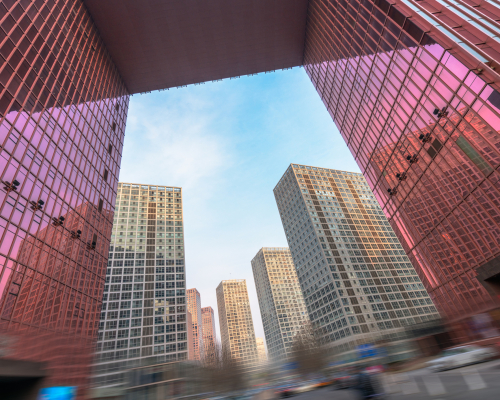
As markets celebrate Congress’s decision not to self-immolate, investors should reflect on how low the bar for rational behaviour by policymakers is, and whether risk premiums reflect the present political and geopolitical tectonic shifts. Despite the recent stock market rallies, which is really a one sector story, technology and AI, risks remain high.

This week, the FOMC will decide whether it will hike interest rates once more, or whether it will pause. Traders and investors, who are faced with the dilemma of whether the Fed will hike or not, face, pretty much, the same situation as Hamlet: A false dilemma.

The debt ceiling drama-that-wasn’t is squarely behind us. An eleventh-hour deal was signed, averting the wanton default of the biggest economy in the world, and the global risk-free asset, the US Dollar, marking the 79th straight time that the debt ceiling was successfully raised.

Our key theme since the beginning of the year is that the world is a volatile and unpredictable place. To be fair, this could have been our theme every year since 2006 and we would have still hit the mark. But this is not garden-variety volatility.

The inevitable US debt ceiling drama is upon us. With the earnings season now mostly behind us, the eyes of investors will inevitably turn towards Washington DC. Investor surveys suggest that this is now the larger risk in financial markets.

The collapse of SVB and Credit Suisse seemed to be one of those watershed moments where it became clear that tightening conditions were claiming their first victims: problematic banks. Yet a month after that episode, global equities are near their highest levels in over a year. Should stocks be so darn happy?

This is not garden variety volatility. Underlying everything are two themes. A big geopolitical shift away from the post-soviet unipolar world, and the war against all that is not sustainable.

In my nearly 20 years in investments there’s one rule that seems to work under any circumstance: Warren Buffet’s “Only when the tide goes out do you discover who's been swimming naked.”

Last week, the ECB hiked twice, defiant of the Credit Suisse debacle. In her initial speech, Christine Lagarde focused solely on inflation, not acknowledging rising financial risks.
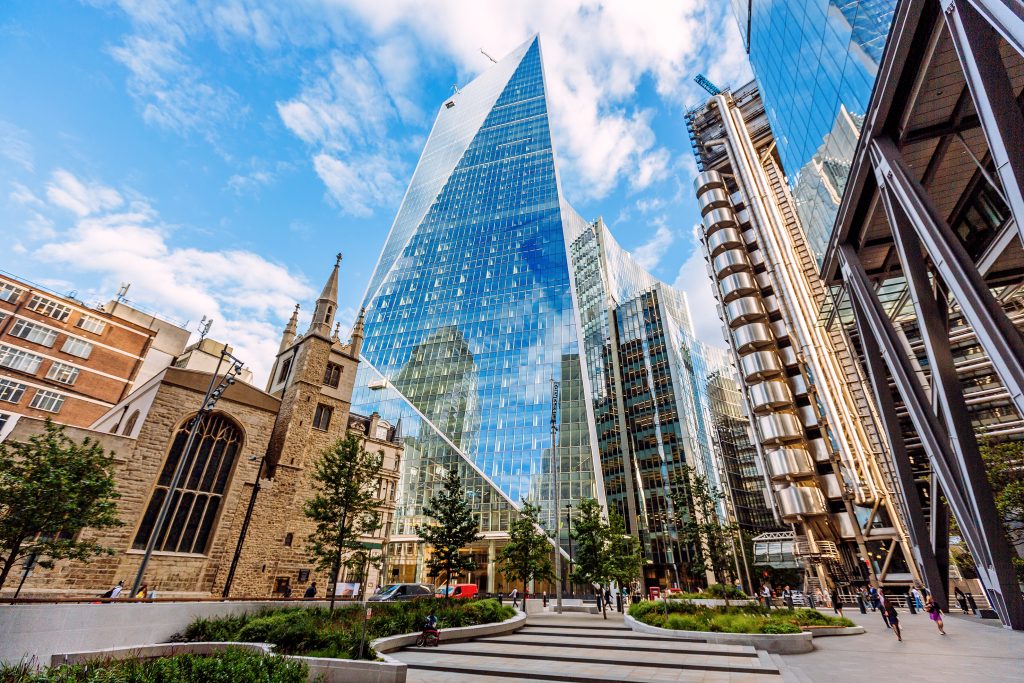
The global economy remains unbalanced as the pandemic disrupts global trade, supply chains and international relations. As a result, individual economies diverge and data is unpredictable and volatile.

If investors collectively believe in the second coming of QE, then at some point, we should expect a severe market retrenchment. But what if markets are more sanguine than that? What will be the major catalyst, to unleash market forces for risk assets to escape their narrow bands?

One of the things that puzzled us in the past few weeks, was that despite the sharp rate hikes, the Fed hadn’t broken anything.

Volatility. The end of the macroeconomic “Great Moderation”. This was our theme entering 2023. We are already seeing data that is volatile, and contradictive.

Before children’s cartoons turned philosophical, opting to promote role-modelling and self-actualisation, they were mostly about slapstick comedy and serious self, or otherwise-inflicted, injury.

If investors collectively believe in the second coming of QE, then at some point, we should expect a severe market retrenchment. But what if markets are more sanguine than that? What will be the major catalyst, to unleash market forces for risk assets to escape their narrow bands?

One of the key risks we persistently flagged in the second part of last year has been the swiftly rising risks in the bond market. Bond risks are not like equities. They are not linear, which means that they can escalate very quickly.

Markets didn’t move much last week. However, one event stood out. Google’s stock lost 10%, nearly $100 Billion in market cap, after it’s Bard AI made an error.

Equity and bond markets continue to rally, with the FTSE 100 hitting all-time highs last week. However, the economic realities of last week are in antithesis with this bull market. In the past fifteen days, the Fed raised rates into a cooling economy and warned markets that it will continue to do so in the coming months.

One of the key risks we persistently flagged in the second part of last year has been the swiftly rising risks in the bond market. Bond risks are not like equities. They are not linear, which means that they can escalate very quickly.

Fund managers consider an inflation resurgence as 2023’s biggest risk. This is the known unknown. Higher inflation would force central banks to maintain tight conditions, even as we are heading for an economic downturn.

Despite the Fed’s persistently hawkish rhetoric, since the last quarter of 2022, markets have embraced a more positive narrative, mostly on the back of increasingly benign US inflation numbers. Last week’s reading further reinforced the positive narrative, sending the S&P 500 one point shy of 4000 and bond yields lower.

The last quarter of the year saw some relief for investors who had been hit from all sides throughout 2022 as markets rallied on the belief that the economy was perhaps showing enough signs of stress to persuade central banks to consider slowing, and then stopping interest rate rises.

Outlooks, our own included, paint quite a grim economic picture at the start of the year. Inflation is really an independent variable and, even if the rate of price rises moderates, prices themselves are set to remain high. Meanwhile, central banks are determined to put the brakes on economic growth in a bid to prevent inflation from becoming entrenched.

Stability should never be seen as the ‘normal’ state of things. And that’s well and truly better for truly long-term investors.

It is an uncomfortable message that we end the year with, yet a necessary one. Stability should never be seen as the ‘normal’ state of things. And that’s well and truly better for truly long-term investors.

Even if we recognise that the world has profoundly changed, we try to analyse it with the eyes of the past. Instead of trying to forecast with the past’s eyes, we need to acknowledge how the present has changed, and develop the right tools to analyse the future properly.

The confluence of a global cost-of-living crisis causing the end to a decade-long economic and financial paradigm, simmering geopolitical tensions, Chinese economic convulsions and US political ones is creating a world with increasingly uncertain outcomes. So how is one to predict anything about the next year?

Outlooks. The time-honoured financial industry tradition of toiling to write 30-40 pages of annual forecasts promptly binned by April- at the very latest. Yet, the industry gods demand it and deliver we must.

It’s bad news for our ‘pivoting’ camp, a word that in the past few months has been grossly and infuriatingly overused. Not only is the Fed speeding up the rate of Quantitative Tightening, but it is also showing no signs that it is ready to change its aggressive tightening policy.

The British Autumn drama entered its third act, and the worst seems behind us. The UK has what may pass for an equivalent to the Euro-crisis technocratic governments in Italy and Greece. That particular playbook would, at this point, see market volatility ebb. Having said that, the play usually hides an unsurprising fourth act.

If there’s anything we know in this profession, it is the people’s yearning for certainty in an uncertain world. Yet, speaking with some authority on the matter, we have never really seen what certainty looks like. If anything, we have learned to fear those who are ‘100%’ sure of anything.
The British Autumn drama entered its third act, and the worst seems behind us. The UK has what may pass for an equivalent to the Euro-crisis technocratic governments in Italy and Greece. That particular playbook would, at this point, see market volatility ebb. Indeed the UK’s 30Y bond is now almost at the same place […]

In history, the lie that is most often told is that of iconic leaders, who won simply because of the merits of their personalities. Henry V won in Agincourt because he was smarter than the French. So did Elizabeth I when the Spanish Armada invaded. All of them brave and unique, to be sure. But also lucky.

How is it that within the space of a few weeks Kwasi Kwarteng was as unceremoniously sacked as Greek Gianis Varoufakis in 2015, and Liz Truss’s position is as, if not more, precarious than Silvio Berlusconi’s in 2012? The answer is really not that surprising: It’s Quantitative Tightening meeting political moral hazard.

Quantitative easing is the ultimate tool to pacify markets. Once it was applied with success, it became very difficult for policymakers to consider other options to restore market calm. They can stop QE, and even reverse it for a while, but the moment markets become too wobbly, they will not hesitate to deploy it.

The third quarter of the year saw markets start to second guess central banks’ resolve to raise interest rates in order to combat inflation. Expectations of a change in monetary policy gathered momentum and caused a rally in global equities of over +11% in a five week period. Alas this proved to be a short- lived bear market rally as central banks, led by the US Federal Reserve, signalled their determination to stay the course with rate rises.

The global financial system is trying to cope with a series of exogenous shocks increasing in magnitude using internal tools. So far this has not been working. The shocks keep coming in and markets remain very volatile. Last week, OPEC+ announced a surprise decision to reduce oil production by 2m barrels per day.

Quantitative easing is the ultimate tool to pacify markets. Once it was applied with success, it became very difficult for policymakers to consider other options to restore market calm. They can stop QE, and even reverse it for a while, but the moment markets become too wobbly, they will not hesitate to deploy it.

UK financial markets were rocked last week by UK Chancellor of the Exchequer Kwasi Kwarteng’s mini budget, which promised a slew of tax cuts in a bid to stimulate economic growth.

Investors worry about equity volatility. However this is, by and large, transient. Instead, we should all be cognisant that we are in a paradigm shift. If growth falters and inflation doesn’t break, the central banks’ mandate and independence may be up for review.

Last week saw the further retrenchment of the S&P 500 below the 4000-point mark as markets continued to digest more hawkish comments by the Fed. Meanwhile, the US 10y bond is back above 3.1% as the sell-off was wide.

A lot can happen in eight minutes. You can boil an egg. You can read eight pages of a novel. You can brew a coffee. Apparently, you can also wipe $78 billion out of existence.

The S&P 500 has rebounded 15% from its lows and is now close to 10% from its highs. This movement is difficult to reconcile with a looming recession, slower earnings, especially for Big Tech, an energy crunch in Europe, wobbly real estate markets and a China still in obvious trouble.

In the past four weeks, the S&P 500 has quietly rallied 15% and is now 10% shy of its all-time highs. For the most part, this is due to the market’s belief that US inflation is at or near its peak and should begin to come down going forward. A slightly better-than-expected earnings season is helpful too.

Both of the UK’s Conservative Party’s leadership hopefuls have campaigned on the soundness of their economic policies although they would do well to remember that actions speak louder than words.

If, a year ago, anyone suggested that the US Federal Reserve, the world’s de facto central bank, would produce a triple rate hike, and that this rate hike would be celebrated with a 5% rally in equities, they would probably be laughed out of the room.
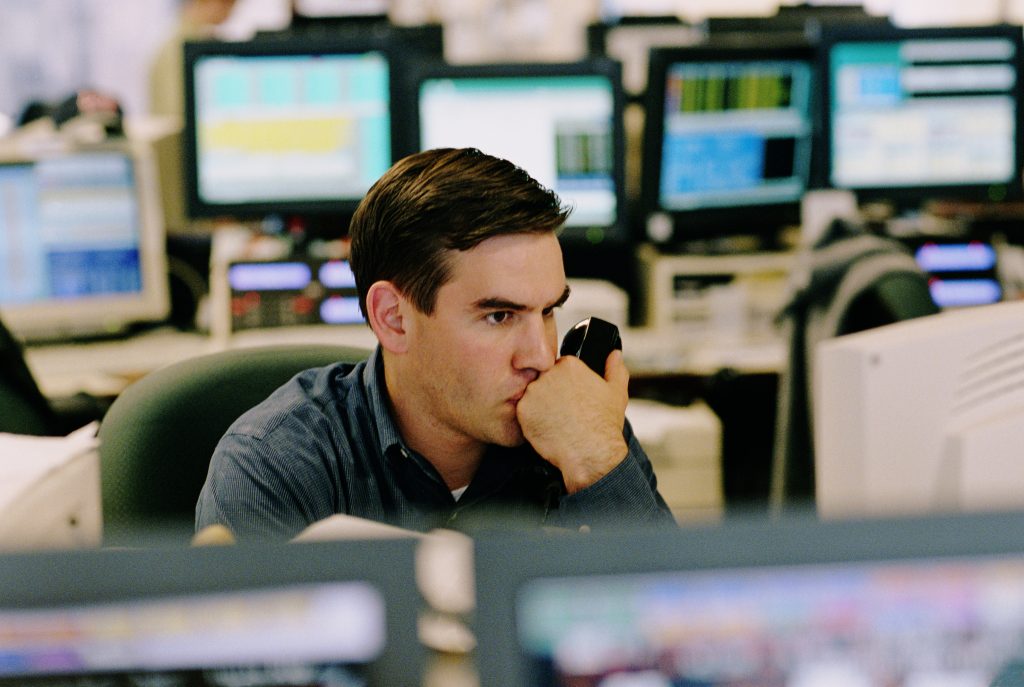
At the end of June our Investment Committee convened to decide the asset allocation for the third quarter. There were no changes to asset allocation, however some duration has been restored to the fixed income allocation. We continue to hold a neutral position in equities, an underweight position in fixed income and an overweight position in alternatives.
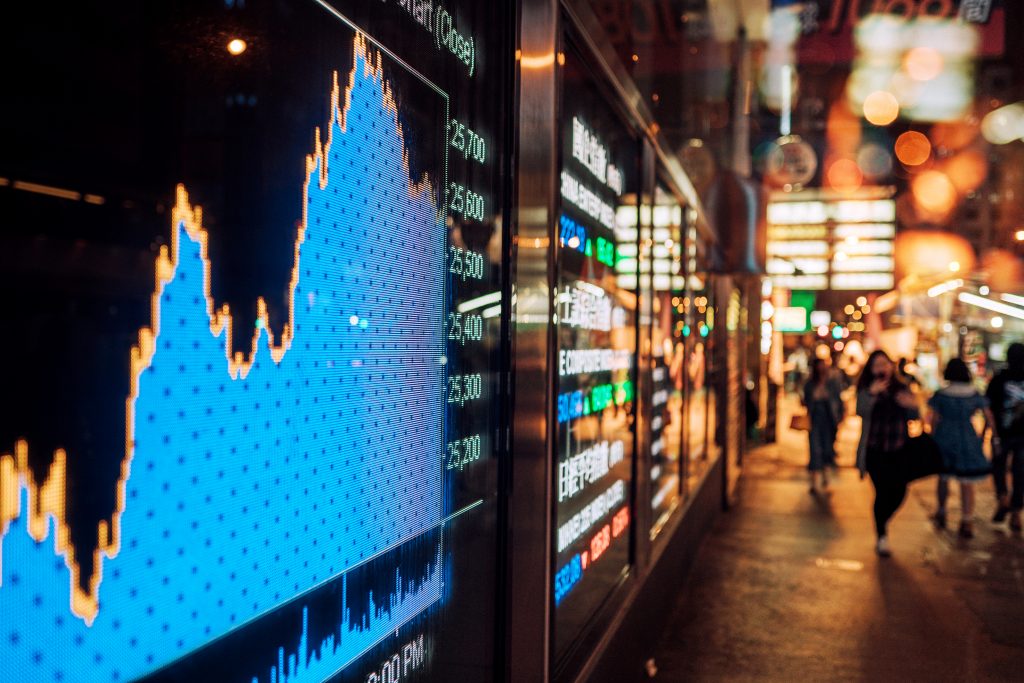
We find ourselves in the midst of a once-in-a-decade paradigm shift for financial markets and the global economy. The first six months of the year have seen the worst equity performance in nearly a century. Already, average portfolio performance is the worst in twenty years, on par with the 2008 global financial crisis.

Last week, the ECB ended years of negative rates with a bold 50bps hike. Then, the bank introduced the Transmission Protection Instrument (TPI). This tool will allow the ECB to purchase bonds of countries where spreads have risen significantly. TPI solves the ‘how do you raise rates without endangering Italy’ conundrum.

Politics are always messy. Often unfair and sometimes even undemocratic. But for long term investors, what matters is not the stability of politics, but the stability of underlying policy decision making. Are institutions robust enough to withstand political volatility? For the time being they are. But make no mistake. Protracted political convulsions will eventually erode major capitalist institutions.

Having been absent for decades, the return of inflation is forcing market analysts to learn how to respond to rising interest rates and squeezes on the real purchasing power of consumers’ disposable income. As interest rates rise, the notion of ‘There Is No Alternative’ is diluted, and the prospects for a slowing economy increase, leaving valuations on risk assets vulnerable despite the recent falls.

Last week featured more volatility, with the world’s leading indices anchoring at bear-market levels in anticipation of new sharp rate hikes by the Fed. Yet, we feel that markets might once again be missing the forest for the trees.

Equities rebounded somewhat at the back end of last week in what was mostly a relief rally. Far from being considered a full recovery, last week illustrates how high market volatility is and how fragile sentiment remains.

Markets have sustained significant losses in the past few days, as a result of persisting inflation driving interest rates sharply higher and undermining growth. Global stocks are now 22% and global investment-grade bonds 19.6% below their December highs. Volatility is significant.
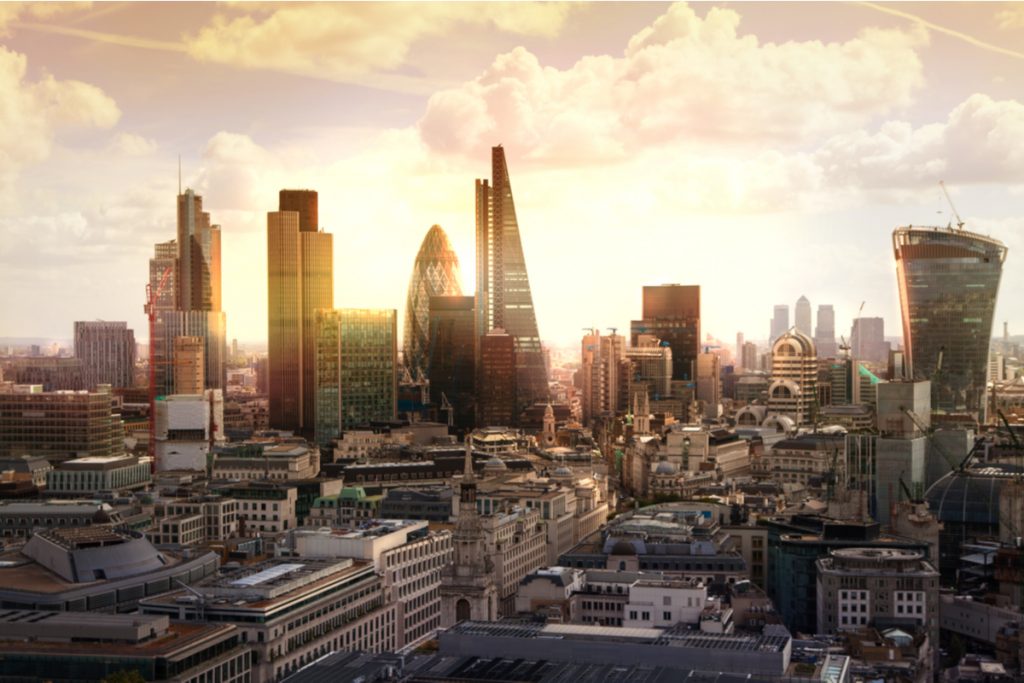
Ostensibly, everything about the latest rally in equity markets screams “Bear Market rally”. After all, how can we call an end to the Bear Market when Quantitative Tightening, the great process to unwind some of the Fed’s recent purchases, hasn’t even begun?

Markets crashed at the back end of last week, as US inflation surprised again on the upside, registering a new cycle-high. The S&P 500 is back below 4000 points, as investors are pricing in a more aggressive policy stance.

It may come as a surprise, but financial markets are less interested in interest rates (which take a lot of time to feed into the real economy, especially from such low levels), and more about two other factors: Quantitative Tightening (QT) and the Fed Put.

Last week we saw the best equity performance since November 2020, after the Fed’s Minutes suggested that they will not be more aggressive than already anticipated. Ostensibly, everything in this move screams “Bear Market rally”.

On Thursday, US equities experienced one of their worst days in the last two years. The global equity benchmark S&P 500 index lost 3.56% and the Dow Jones shed around 1000 points, a number which usually makes headlines.

Last week, global equities once again came under pressure, falling -0.9%, as the Federal Reserve raised the possibility of several 50 basis point interest rate hikes over the coming months in an attempt to tackle rampant inflation and cool robust demand.

Equities did not stray far from their initial levels this week in GBP terms, as markets closed a day early in observance of Good Friday. US equities initially rose following the release of inflation numbers, as core inflation was lower than expected, but fell -0.7% over the week as oil prices rebounded.

Globalisation is not inherently “good” or “bad”. It is the natural historic evolution of the nation-state, made possible by the internet and the potency of capitalism. But is it over?

The new year brought about a significant change of market sentiment as concerns about inflation and fundamental changes to monetary policy caused a reassessment of asset prices. The war in Ukraine has added to inflationary pressures particularly in commodity markets, as further disruption is expected in supply chains as China announces further lockdowns.

It takes a confluence rather than individual risks to cause catastrophe, as any veteran of the Global Financial Crisis will attest. We believe that there’s a mounting probability that we are seeing such a confluence of risks now, one that could significantly hurt growth:

Last week was mixed for equities as the Federal Reserve announced preparations for a new round of quantitative tightening (QT) in order to reign in the significant expansion of the Fed’s balance sheet over the course of the pandemic. Global stocks fell -0.9%, as the healthcare & energy sectors outperformed, whilst technology was the main laggard.

It takes a confluence rather than individual risks to cause catastrophe, as any veteran of the Global Financial Crisis will attest. We believe that there’s a mounting probability that we are seeing such a confluence of risks now, one that could significantly hurt growth:

Stocks rallied globally last week, as investors saw falling oil prices and possible negotiations between Russia and Ukraine as reasons for optimism. US stocks appeared unfazed by the Federal Reserve’s decision to raise interest rates by 0.25%, rising +5% over the week, while 10 Treasury yields rose by 15.8 bps.

Cancelling a person, right or wrong, is no small feat, and there are repercussions. “House of Cards” was a series that literally made Netflix, yet it features much less prominently after Kevin Spacey’s cancellation. The cancelled actor/celebrity will have worked with other people, who will now see their incomes reduced as works of art are withdrawn and themselves smeared by association.

Last week, markets were whipsawed by further escalation and uncertainty surrounding the invasion of Ukraine, as well as US inflation figures, now comfortably situated at levels not seen since the early 1980s. US stocks fell -1.5%, whilst European markets posted significant gains of +4.0%, recouping some of the considerable losses over the last month. UK equities continued the trend of relative outperformance last week, posting gains of +2.8%. However, both emerging market and Japanese stocks fell -3.7% and -3.1% respectively. While risk-off sentiment in markets is often accompanied by a flock to safety into government bonds, this was not observed last week as yields rose. The US 10Y rose 26.1 bps, finishing the week at 1.992%. The German 10Y Bund also recorded similar outflows, with yields rising 31.8 bps to 0.249%. In the commodities space, news that the London Metals Exchange (LME) cancelled trades as a short squeeze forced the price of nickel to skyrocket unsettled traders and investors alike. Metals returned +0.9% in GBP terms whilst gold continued to perform well, up +2.3% on the week.

The fallout from the invasion of Ukraine continued to rock markets last week, as the attack on the Zaporizhzhia nuclear plant gained widespread media attention and represented a further escalation of the conflict. Most major indices posted losses last week, although geographical location significantly influenced price action. US stocks remained relatively stable, down -0.1%, whilst European markets suffered losses of -9.1% on concerns over rising energy prices and the potential for further supply chain disruption. The risk-off sentiment and subsequent flock to safety by investors saw bond yields fall. The US 10Y fell 23.1 bps, finishing the week at 1.731%. The German 10Y Bund recorded similar inflows as the yield crossed back into negative territory, finishing the week at -0.069%. Russia’s role in the global economy as exporter of many commodities has encouraged sharp price rises. Oil rose a staggering +26.4% to $125.5 per barrel, whilst metals returned +12.0% in GBP terms. Gold also performed well, up 5.5% on the week. The US Dollar also benefitted from the safety trade and performed well relative to the Euro and Sterling.

Equity markets were rocked last week, as inflation in the US surged past estimates to 7.5%, causing yet more problems for the Federal Reserve in their attempts to combat inflation without triggering a market shock. To further add to economic uncertainty, the White House also signalled that an imminent invasion of Ukraine by Russia was becoming increasingly likely, triggering a sell-off in US equities on Friday afternoon. The build-up of Russian troops on the Ukrainian border has caused many NATO member countries great concern, with UK nationals now being advised to evacuate Ukraine immediately. US equities finished the week down -2.3% in Sterling terms, whilst Europe did not have the chance to catch up with Friday’s price

There’s a strong possibility we may see the end of the episode soon. But supply chains could take long to mend and overall price levels could remain elevated versus pre-pandemic numbers.
Market Update Global stocks continued their fall throughout a volatile week, with most regions again falling significantly. However a rally in US stocks late on Friday, on the back of strong earnings in Apple (which rose 7%), saw US equities finish the week up +0.8% in US Dollar terms and +2.1% in Sterling terms. Other […]
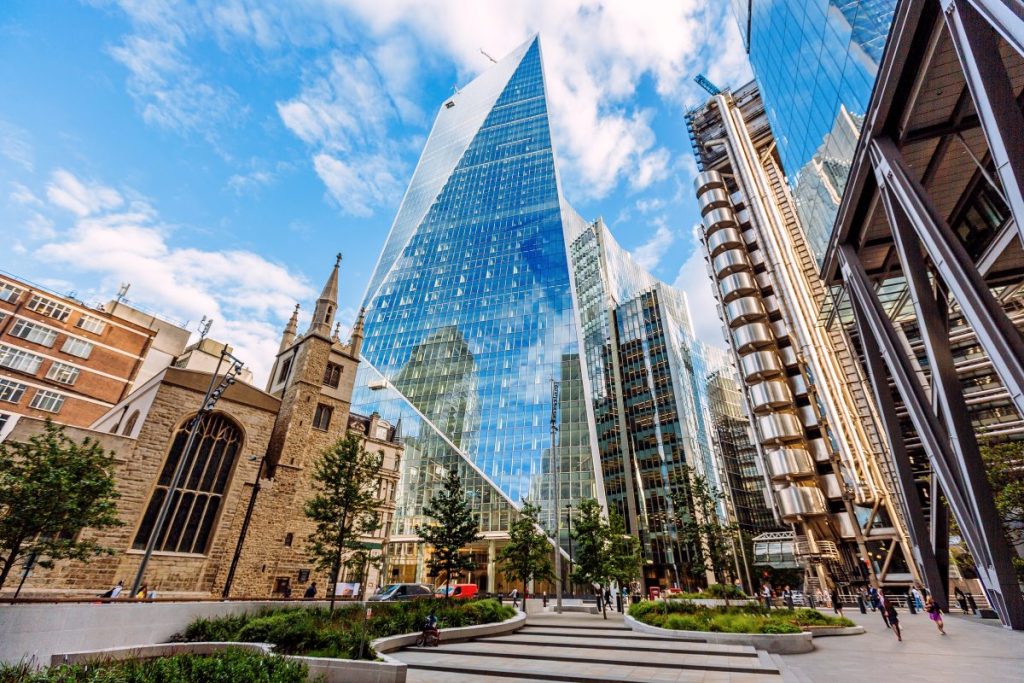
The worst start to the year inn 20 years leaves investors confused. Here's why we are more relaxed about it.

Market Update It was a volatile week for global equities as investors were presented with a mixed array of economic data. US and EU stocks fell -0.8% and -1.5% respectively, while heavy exposure to the energy sector continued to favour UK equity markets which gained +0.8%. Emerging market stocks posted a rebound after a prolonged […]

2022 is the year where QE (conceivably) ends, and a decade-long Sustainability theme begins. Read our annual outlook.

In no surprise to anyone, Covid-19 remained at the epicentre of all matters economic, and the emergence of the highly transmissible Omicron variant forced governments and public health officials to reassess the speed at which normal daily life can resume.

Market Update Equities broadly retreated during the first week of 2022, as the minutes of the Federal Reserve meeting and Friday’s US jobs report both raised market expectations for interest rate hikes by the Federal Reserve. US and EU stocks suffered losses led by falls in the technology sector, whilst UK stocks fared well due […]

Market Update Equities in major markets retreated last week as tightening central banks and the prospect of further coronavirus restrictions due to the Omicron variant gave rise to renewed volatility. US, UK and EU stocks slipped following the decisions of the Federal Reserve to taper at a faster rate than expected, the Bank of England […]

The Omicron variant was not much of a surprise. We have already seen many mutations of Covid-19. But a hawkish Fed? We haven’t experienced one since 2018. As the potential of a new outbreak emerges, Fed Chair Jay Powell surprised markets by insisting that the US central bank would accelerate asset purchase tapering in December. Instead of customarily intoning the ‘Fed Put’, as per usual in times of crisis, Mr. Powell added fuel to the fire, causing unusual, for December, equity volatility.

Inflation rising may upend a 12-year investment paradigm. Is there life after Quantitative Easing?

Market Update Equities in major markets rebounded last week, as fears over the impact of the Omicron variant of Covid-19 appeared to subside due to the news that booster vaccine shots may be effective against the new strain. Many indices returned to, or exceeded, levels seen before the initial news of the Omicron variant triggered […]

Market Update Equities in major markets saw mixed returns in the past week, with global stocks down -0.7% after a volatile week of trading. US stocks were down -0.5% over concerns that the Federal Reserve could taper its asset purchases at a faster rate and that the Omicron variant may hamper the economic recovery. European […]
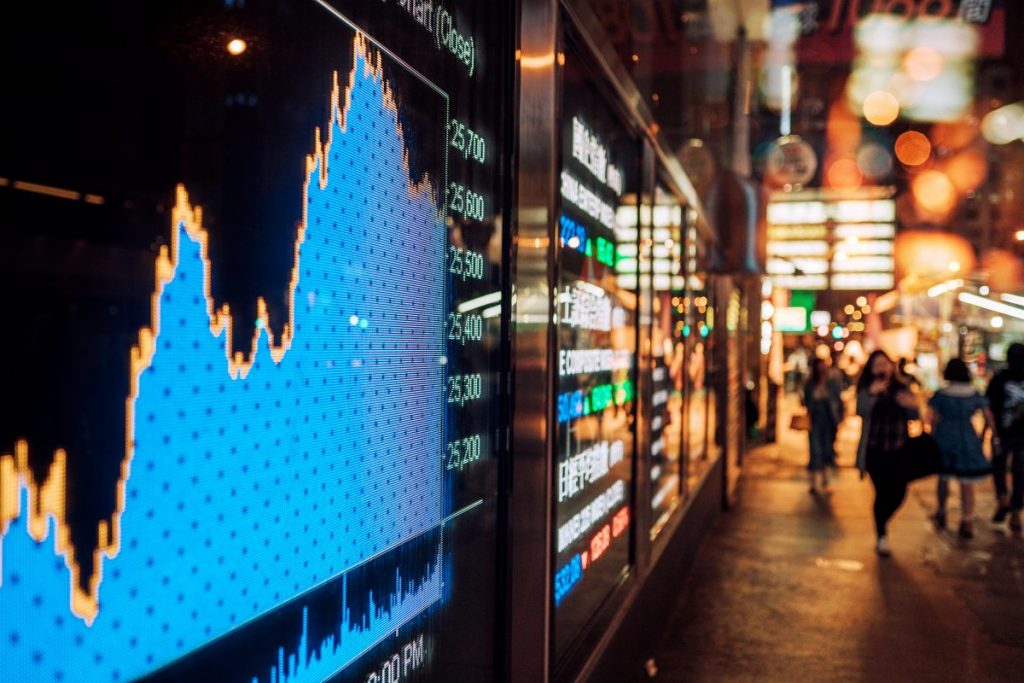
A new, more transmissible variant, and a surprisingly hawkish Fed brought some of the most volatile trading days in months.

Equities in most major markets posted large losses last week with global stocks down -1.8% in Sterling terms, driven by a sharp sell off on Friday after news that the new omicron coronavirus variant could be extremely contagious. US stocks were down -1.3% despite positive economic data being published earlier in the week, with weekly jobless claims hitting their lowest level since 1969. European stocks were down -3.8%, as certain countries continued to impose restrictions to curb rising Covid-19 cases. UK stocks were down -2.4%, while emerging market equities fell by -2.7%. The US 10Y Treasury yield was down 7.3bps finishing the week at 1.473%, while the UK 10Y yield was down 5.4bps reaching 0.825%. In US Dollar terms gold fell -1.3%, perhaps surprisingly given the perception it is a defensive asset, while oil was heavily down -10.2% to $68 per barrel.
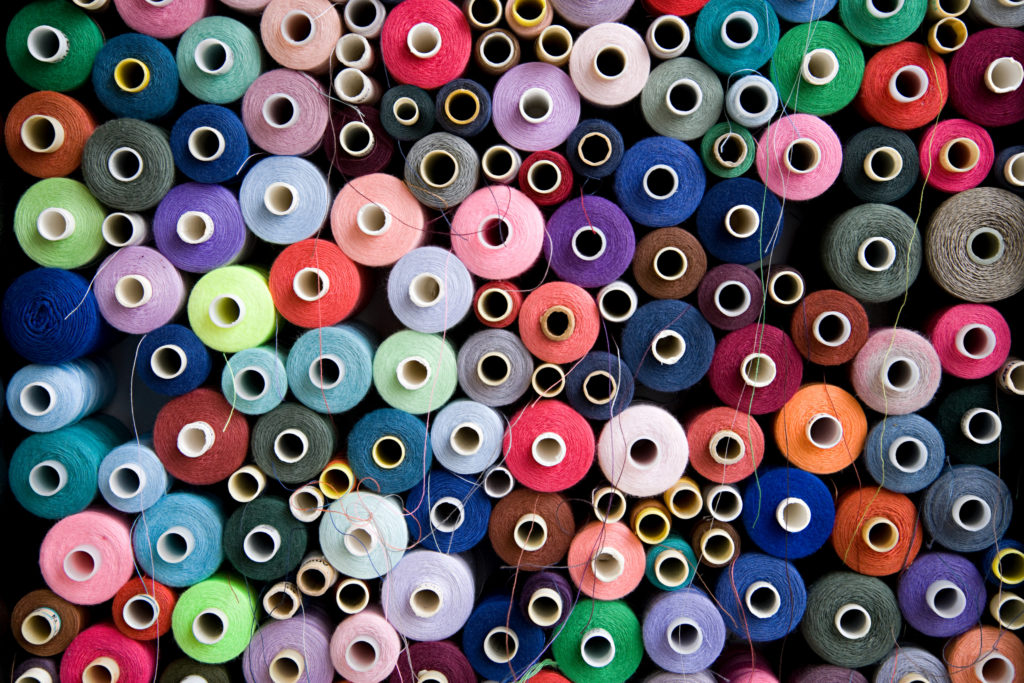
The course of the pandemic in 2022 is not expected to be linear. By and large the pandemic continues to determine economic output and supply chain cohesion. An even more transmissible variant, even if completely covered by current vaccines, could materially increase pressures on consumers, businesses and supply chains.

As the new german government is being installed, European risk indicators are on the rise. Are markets preparing to challenge the Euro's new status quo?

Equities in most major markets posted losses last week with global stocks down -0.4% in Sterling terms, as inflation concerns, supply chain issues and rising coronavirus cases dampened investor sentiment. US stocks were up +0.1% with growth stocks exhibiting solid gains, outweighing the losses in more cyclical firms. European stocks were down -1.8%, as countries within the region started imposing restrictions to curb rising Covid-19 cases. UK stocks were down -1.6% amid CPI inflation figures hitting a ten-year high, while EM equities fell by -1.7%. The US 10Y Treasury yield was down 2.2bps finishing the week at 1.548%, while the UK 10Y yield was down 3.5bps reaching 0.880%. In US Dollar terms gold lost some of its previous weeks’ gains, down -1.3%, while oil was heavily down -6.2% to $76 per barrel.

Equities in most major markets posted minor gains last week with global stocks up +0.3% in Sterling terms, as inflation concerns seem to have stemmed a previously strong investor sentiment. US stocks were up +0.2% as multi-year high inflation data offset positive news on employment data. EU stocks were up +0.2%, despite Covid-19 cases surging in most countries in the region. UK stocks were up +0.7% while EM equities rose by +2.2%, driven by China’s announcement that it would propose easing measures to aid indebted real estate firms. The US 10Y Treasury yield was up 11.0bps finishing the week at 1.561%, while the UK 10Y yield was up 6.9bps reaching 0.914%. In US Dollar terms gold posted solid gains for the second week in a row, up +3.1%, while oil was down -0.1% to $80.4 per barrel.

What do the British budget and COP 26 have in common? The -possibly inevitable- return of ‘Big State’. The 1980s ushered in an era of lower taxes and reliance on consumers to fuel growth. The Covid-19 pandemic, twelve years after the global financial crisis, followed by at least a decade of ‘Sustainability Economics’ may put […]

Equities in most major markets posted gains last week with global stocks up +3.3% in Sterling terms, amid continued strong investor sentiment. US stocks were up +2.0% on the back of positive earnings surprises, a dovish Fed meeting and strong employment data. EU stocks were up +3.2%, with the ECB insisting that rates will stay low for the near future. UK stocks were up +1.0% as the BoE unexpectedly kept interest rates unchanged, which caused Sterling to fall -1.4% against the US Dollar. Globally, consumer discretionary and IT were the best performing sectors while financials and healthcare were the worst performing. The US 10Y Treasury yield was down 10.6bps finishing the week at 1.455%, while the UK 10Y yield was down 19.0bps reaching 0.845%. In US Dollar terms gold was up +3.4%, while oil was down -1.3% to $81.2 per barrel.

Equities in most major markets posted gains last week with global stocks up +1.4% in Sterling terms, amid stronger investor sentiment. US stocks were up +2.0% as positive earnings surprises continued during the busiest week of the earnings season. EU stocks were up +1.2% amid strong corporate earnings, while UK stocks were up +0.5% as the OBR revised its outlook for the UK economy upwards. Globally, consumer discretionary and IT were the best performing sectors while financials and energy were the worst performing. The US 10Y Treasury yield was down 8bps finishing the week at 1.552%, while the UK 10Y yield was down 11.1bps reaching 1.034%. Sterling was down -0.5% against the US Dollar. In US Dollar terms gold was up +0.1%, while oil was down -0.6% to $84.2 per barrel.

Equities in most major markets posted gains last week with global stocks up +1.4% in Sterling terms, amid stronger investor sentiment. US stocks were up +1.7% as positive earnings surprises continued for a second week in a row. EU stocks were up +1.2% despite heightened concerns that a rate hike could come sooner than expected, while UK stocks were down -0.4% as the latest inflation readings remained above the BoE’s 2% target. Globally, most sectors posted gains with healthcare and utilities being the best performing, while materials and telecoms underperformed. The US 10Y Treasury yield was up 6.2bps finishing the week at 1.632%, while the UK 10Y yield was up 3.9bps reaching 1.145%. Sterling remained flat against the US Dollar. In US Dollar terms gold was up +1.4%, while oil was up +2.9% reaching $84 per barrel.

This quarter we consider the UK’s rising inflation and gas prices, look at how the shortage of workers is adding to inflationary pressures, and review the funds we use to invest in US Small Cap stocks.

'Work' may never be the same after the pandemic. How might things play out? What do businesses need to know to prepare? Read our quarterly economic update

Seen from a bird’s eye view, the Fed has turned more hawkish in preparation to taper asset purchases. As a result, markets are now more prone to respond with volatility to rising risks, of which there’s no shortage: From soaring natural gas prices to impaired supply chains threatening consumers and businesses; from a new status […]

Equities in most major markets posted gains last week with global stocks up +1.1% in Sterling terms, amid some improved economic figures. US stocks were up +0.8% as the earnings season kicked off strongly with major banks beating earnings expectations. EU stocks were up +1.6% despite a contraction in the industrial sector while UK stocks were up +2.0% amid strong macroeconomic data showing output growth during August. Globally, almost all sectors posted gains with cyclicals outperforming relatively versus more defensive stocks. The US 10Y Treasury yield was up 3.8bps finishing the week at 1.574%, while the UK 10Y yield was up 5.6bps reaching 1.105%. Sterling rose by +1.0% against the US Dollar. In USD terms gold pulled back by -0.4%, while oil was up by +2.5% reaching $82 per barrel.

Equities in most major markets edged higher last week, partly offsetting the previous week’s losses, with global stocks up +0.3% in GBP terms. US stocks were up +0.4% despite the disappointing jobs report published on Friday. European stocks were up +0.2% amid high volatility while UK stocks were up +1.0% despite the BoE’s new Chief Economist raising the alarms on inflation’s persistence in the coming months. Globally, energy stocks outperformed all sectors for a fifth week in a row, posting solid gains of +4.9%, followed by financials, utilities and materials. The US 10Y Treasury yield was up 15.0bps, finishing the week at 1.612%, while the UK 10Y yield was up 15.6bps reaching 1.158%. Sterling rose by +0.5% against the US Dollar. In USD terms gold pulled back by -0.6%, while oil was up by +4.1%, reaching $81 per barrel.

Equities in most major markets pulled back amid inflation worries, persistent supply side issues and more contractionary anticipated monetary policy - global stocks were down -1.6% in GBP terms. US stocks were down -1.2% as uncertainty loomed around the federal debt ceiling and the approval of the USD 1 trillion infrastructure bill. EU stocks were down -1.2% amid higher than expected inflation while UK stocks were down -0.3% despite an upward revision of latest GDP figures. Globally, Energy stocks continued their upward trend for another week in a row posting solid gains of +4.9%, with the rest of the sectors pulling back. The US 10Y Treasury yield was up 1.2bps finishing the week at 1.465%, while the UK 10Y yield was up 8.2bps reaching 1.00%. Sterling fell by -1.0% against the USD. In USD terms gold rose by +1.6%, while oil was up by +3.5%.

Stock indices in most developed market regions rebounded strongly after Monday’s acute sell off amid fears of Evergrande’s default - global stocks were up +0.7% in GBP terms. EU stocks were up +1.7% despite business activity losing steam, while US stocks rose +1.0% after recording their biggest daily drop since May 12th, on Monday. UK stocks rose by +1.0% as the BoE announced that rates will be unchanged; however holding a more hawkish stance. Globally, Energy stocks continued their upward trend posting solid gains of +4.0% followed by financials, IT and consumer discretionary. The US 10Y Treasury yield was up 8.9bps finishing the week at 1.453%, while the UK 10Y yield was up 7.4bps reaching 0.922%. Sterling fell by -0.4% and -0.3% against the USD and the Euro respectively. In US Dollar terms gold rose by +0.2%, while oil was up by +3.4%.

Global stocks were relatively unchanged in Sterling terms (down -0.7% in USD terms) last week amid investors’ skepticism around supply chain issues hampering growth, elevated valuations and future monetary policy. Japanese stocks posted gains for a consecutive week, rising by +1.1%, as campaigning began for the next president of Japan’s ruling LDP. UK stocks fell by -0.9% amid higher than expected inflation, while US stocks were up +0.2% driven by a strengthened US Dollar. Globally, all sectors exhibited losses apart from energy stocks which posted solid gains of +2.8%. The US 10Y Treasury yield was up 2.1bps finishing the week at 1.363%, while the UK 10Y yield was up 8.9bps reaching 0.848%. Sterling fell against the US Dollar by -0.7% and remained flat against the Euro. In US Dollar terms gold lost -1.2%, while oil was up by +4.0%.

For a long time our central theme has been the disconnect between the real and the financial economy. Nowhere has this disconnect been mademore clear than in the Fed’s communication in August. The bullish economic outlook clashed directly with a dovish approach on interest rates.Actions speak louder than words, however, and it is becoming apparent […]

Global stocks were down -1.1% in Sterling terms last week amid fears of momentum fading and growth concerns due to the persistence of supply chain issues. Japanese stocks were the only region to post gains, rising by +3.8% in Sterling terms, buoyed by news of prime minister Suga stepping down and expectations of further stimulus. UK, US and European equities were all down -1.5% driven by inflation concerns and uncertainty about the economic outlook. Globally, all sectors exhibited losses apart from consumer discretionary. The US 10Y Treasury yields were up 1.7bps, finishing the week at 1.343%. German 10Y Bund yields were up +2.6bps to -0.332% after the ECB announced it would reduce the pace of its pandemic asset purchasing programme. Sterling fell against the US Dollar by -0.2% and rose by +0.4% vs the Euro. In US Dollar terms gold lost -2.1%, while oil was up by +0.7%.

US, UK and European equities were relatively unchanged in Sterling terms last week, faring -0.1%, +0.1% and -0.1% respectively, amid concerns that the rate of global growth could start decelerating. Japanese equities were up +4.0% despite the resignation of Prime Minister Yoshihide Suga, while emerging market equities were up +2.7%, positive for a second week in a row after the Chinese tech sector had fallen significantly in previous weeks. Globally, stocks were up +0.3%, with energy and financials being the only sectors exhibiting losses. The US 10Y Treasury yield was down -1.5bps finishing the week at 1.322%. The German 10Y Bund yield was up +6.2bps amid higher than expected inflation in the euro area. Sterling was up +0.8% against the US Dollar and unchanged relative to the Euro. In US Dollar terms gold lost -0.1%, while oil prices rose slightly by +0.1%.
Market Update US equities ended the week on a positive note, but the omnipresent uncertainties of the Delta variant, Fed tapering, and geopolitical issues put the other major indexes in the red for the week. Emerging market equities were down -2.9% as China’s continued regulatory crackdown on big businesses, mainly the technology sector, remained a […]

Market Update Global equities rallied again last week, however this time it was Japanese equities leading the way, up +2.1% in Sterling terms, having lagged behind in recent weeks. UK and European equities were also up +1.7%, with US equities gaining +0.8%. The only region to fall was emerging markets, down -0.8% in Sterling terms. […]

Market Update Global equities rallied last week, with US equities leading the way, up +1.4% in Sterling terms, boosted by 87% of US firms beating earnings expectations. European equities were up a similar amount in local terms, however up only +0.4% in Sterling terms. UK equities were up +0.2%, however Japanese equities fell -1.3%. With […]

Market Update Developed markets were off slightly over the course of the week. US technology companies registered a new high during the week as Microsoft and Alphabet recorded strong Q2 earnings, but Amazon’s miss on revenues pulled the technology index down slightly on Friday. In the US and abroad the rise of the delta variant […]

Market Update Following a tumultuous start to the week, global equities rallied to finish in positive territory. The decision by OPEC+ to increase production contributed to markets selling-off on the Monday, with energy the worst performing sector for the week, while most other sectors recovered to finish up or almost flat. In particular telecoms, IT […]

Market Update Global equities fell -0.3% last week in Sterling terms, with a stark dispersion in returns. UK equities fell the most, down -1.6%, with US and European equities falling -0.4% and -0.3% respectively. Energy stocks were the worst performing globally, with financials also weak, both of which contributed to the UK’s underperformance. However Japanese […]

Investing during the past twelve years has been underpinned by a basic principle: market participants have been encouraged to take risks, mainly to offset the trust shock that came with the 2008 financial crisis (GFC). Each time equity prices have fallen significantly, the Federal Reserve, the world’s de facto central bank, would suggest an increase in money printing, or actually go ahead with it if volatility persisted. Bond prices, meanwhile, kept going up, as central banks and pension funds were all too happy to relieve private investors of their bond holdings even at negative yields. Market risk was all but underwritten.

Visibility about the future is as low as it has ever been. In recent memory it is difficult to recall a market and economic environment with such low degree of consensus amongst investors and business leaders. Even as vaccination is bringing the world closer to the end of the pandemic, uncertainty is everywhere to be […]

Market Update In a week where global equities fell -0.1%, European stocks were flat and UK stocks rose +0.1%, we shouldn’t be deceived by the apparent calm. Global equities were shaken on Thursday due to concerns about slowing global growth and this caused a sharp sell off across developed markets. However, on Friday the realisation […]

Market Update Global yields fell last week on concerns about the spread of the delta variant and its possible effect on the ability of economies to recover from the pandemic. US 10Y yields fell 10bps to 1.424%, with UK and German 10Y yields also falling 7.5 and 8bps respectively. The result for global stocks was […]

Market Update Global equities rebounded last week after a period of weak performance. US equities led the way in Sterling terms, up +2.1%. UK, European and emerging market equities gained +1.8%, +1.1% and +0.8% respectively. Although up in local terms, weak Yen performance saw Japanese equities fall -0.3% in Sterling terms. US equities are now […]

Market Update Global equity markets fell last week in local terms, selling-off on hawkish comments from the Federal Open Markets Committee that suggested two interest rate hikes in 2023. Further hawkish comments from FOMC members, including the possibility of a tapering of asset purchases, were also seen as contributing to weak equity performance. What was […]

Market Update Global markets were again positive for the week, although with global yields falling markedly, it was the growth and bond-proxy sectors which were positive, with healthcare and IT the standout gainers. Meanwhile cyclical stocks, which have seen upturned performance since the positive vaccine news in November, had a poor week. Financials, materials and […]

I remember when liberal capitalism failed. The night of Friday 12 September 2008 no one was particularly worried. Barclays would rescue Lehman Brothers, like Bear Stearns was saved before it. On Monday morning we got the news. A Wall Street icon was the first victim of a year-long credit crunch. If one giant can fall, […]

Market Update It was a steadily positive week for equity markets last week, with all major regions gaining in Sterling terms. Emerging markets equities were the strongest performing, up +1.8%, while Yen strength saw Japanese equities returning +1.2%. Energy was the strongest performing sector globally, as oil prices reached their highest level in two years. […]

In a relatively volatile week of equity market trading, ultimately most major equity markets ended nearly unchanged. Following on from US inflation last week, there was increased focus on the UK and EU readings this week, with investors looking for any evidence of a potential shift in monetary policy. US equities fell most of major equity markets for British investors, down -0.7% in Sterling terms, although more modestly in local currency terms. UK equities ended a mixed week down -0.2% as the effects of stronger than anticipated labour market data and inflation played out. Emerging markets and Japanese equities saw a role reversal last week as they moved from laggards to leading markets, with emerging market equities providing the best returns to Sterling investors up +1.4% on the week. European equities rose +0.6% in Sterling terms. The US 10Y yield fell -0.7bps to 1.6%, while the UK 10Y fell -2.7bps to 0.8%. In commodity markets, gold rose +1.7%, while oil fell -2.9% to $64.1 a barrell.

Global economies are reopening, and moving into the recovery phase, this pickup in activity has lead investors to question the potential impact on inflation. Investors are cautious of whether inflationary effects will be transitory or long-lasting. The US inflation reading unnerved markets and all major equity markets fell last week. US equities fell -2.2% in Sterling terms, partly driven by currency effects, markets had sold off sharply at the start of the week before recovering in the latter half. UK equities, which typically move inversely to Sterling, due to high levels of overseas earnings, fell -1.2%. Japanese equities fared worst last week, caught in global equity volatility and increased lockdowns, falling -4.0% last week. Despite strong Chinese equity performance, emerging market equities fell -3.8% in Sterling terms. The US 10Y yield rose 5.1bps to 1.6%, while the UK 10Y rose 8.2bps to 0.9%. Both gold and oil were nearly unchanged, falling -0.2% and -0.1% on the week respectively.

April saw a de-escalation of bond yields and a further rise in stock market prices across the board. Risk assets began to gear up for the acute phase of the economic rebound, as vaccinations progress in most G7 countries, especially the UK and the US. Currently there are three big themes we think all investors should be watching. Find out here -

With many regions operating a shortened trading week, returns varied significantly across major equity markets. UK equities provided the best returns to Sterling investors, up +2.4%. The rise in UK equities was helped in part by rising commodity prices, with miners and energy firms benefiting from rising metal and oil prices. European equities provided the next best returns, up +1.7% in Sterling terms. US equities rose a modest +0.2% in Sterling terms, though up +1.3% in local currency terms, as the rotation from growth to value impacted returns. Emerging markets fell -1.0% in Sterling terms. Japanese equities rose +1.3% in Sterling terms, not quite enough to move the region into positive territory year-to-date. The US 10Y yield fell temporarily on bad jobs data, although recovered somewhat, ending down 4.9bps to 1.6%, while the UK 10Y fell 6.7bps to 0.8%. Gold rose +2.4% on the week, while oil rose a further +1.0% to $65.4.

Once again many major equity markets finished the week not far from where they started. Market attention was squarely focused on the Federal Reserve, where chairman Jerome Powell promised not to raise rates in the near term; as a consequence, markets did not sharply react in either direction. US equities were flat in US Dollar terms, but up +0.2% in Sterling terms. UK equities were the best performing region, up +0.5% last week. European equities fell for the second consecutive week, down -0.8% in Sterling terms. Emerging markets fell -0.2% in Sterling terms. Japan was the clear laggard, where earnings failed to meet expectations and the Bank of Japan kept policy unchanged. Japanese equities fell -1.9% in Sterling terms. The US 10Y yield rose on improved economic data, up 6.8bps to 1.6%, while the UK 10Y rose 9.8bps to 0.8%. Gold fell -0.3% on the week. The better than expected economic data helped oil to rise +2.4% last week to $64.4.

Equity markets ended the week largely unchanged, with the largest movements seen in Japanese and UK stocks. UK equities fell -1.1%, driven in part by a falling oil price, as the global economic outlook increasingly uncertain, with clear inequality in the vaccination progress between regions, dampening expected demand for oil. US equities fell -0.3% in Sterling terms, with plans to raise capital gains tax only making a slight impact on US markets. European equities rose +0.2% in Sterling terms due to currency effects, having fallen -0.4% in local currency terms. Emerging markets were the only risers in local currency terms, and were up +0.1% in Sterling terms. Globally the best performing sector was healthcare, whilst energy was the worst performing. The US 10Y yield fell slightly by 2.2 bps to 1.6%, while the UK 10Y fell 2 bps to 0.7%. Gold fell -0.2% on the week. Oil fell as the economic outlook deteriorated, down -1.7% on the week to $62.1.

Global economic divergence has caused a surge in input prices evident in various Purchase Manager Index reports as well as producer price indices. In early February markets began to price in the probability of higher inflation. The long end of the yield curves (where inflation lives) rose, while the short end (affected more by interest rates) remained at the same levels.

Rising concerns for the prospects of inflation dominated the first quarter of 2021 and caused bond market yields to rise in both the US and the UK. As a result, US treasuries lost over -5% of their value (in Sterling terms) during the period, whilst the loss on gilts was even greater at just shy […]

UK equities reached the highest level in over a year as part of a broad-based rally in equities globally. Equity markets continue to benefit from increasing risk appetite as investors become increasingly bullish on a 2021 recovery. UK equities rose +1.6%, although it remains one of just a few regions not back to all time highs.US equities rose +0.7% in Sterling terms, the stronger growth moderated by Sterling rising +0.9% against the US Dollar. Globally the best performing sector was materials, whilst telecoms lagged other sectors. The US 10Y yield fell 7.9 bps to 1.6%. The UK 10Y yield was more or less unchanged, down just 1.0 bps to 0.8%. Gold rose +1.1% on the week, although it remains -7.6% so far this year. Oil rose +5.7% last week to $63.1 a barrel. Oil is up +28.5% this year. The jump in oil prices comes in spite of global coronavirus cases beginning to rise in many regions, with several European and Asian economies looking likely to increase the stringency of lockdowns.
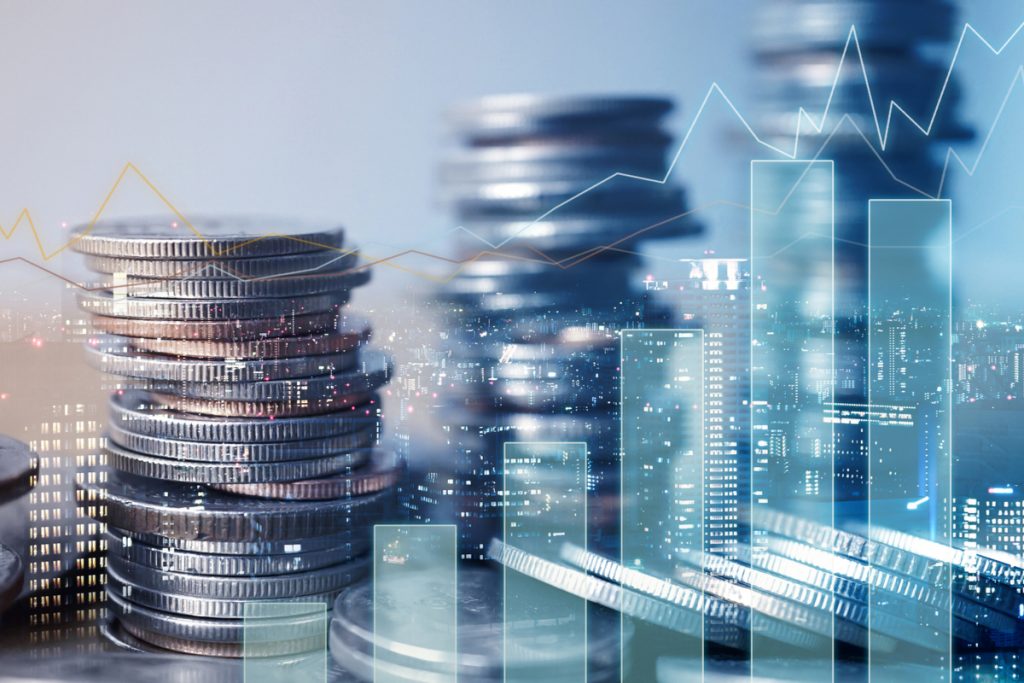
Inflation expectations rising scared lethargic bond markets and became the most contentious subject of debate in the first three months of the year. Read our outlook to find our position on inflation and the impact on risk assets

Markets opened positively this week thanks to the impact of stronger than anticipated US payrolls data released over the bank holiday. Meanwhile, the EU vaccination campaign is finally beginning to pick up pace. US equities rose +3.4% in Sterling terms, reaching further record highs. UK equities rose +2.7% in the final week before the second phase of lockdown easing. European equities rose +3.2% in Sterling terms, supported by the increased likelihood of fiscal stimulus in the region. Emerging market equities fell in local currency terms, but gained +0.1% in Sterling terms. Globally, the best performing sector was information technology, whilst energy was the worst performing. The US 10Y treasury yield fell slightly down 6.3 bps to 1.7%, while the UK 10Y gilt yield fell 2.1 bps to 0.8%. Gold rose +1.6% last week. Oil fell for the second week, down -2.8% to $59. Oil has fallen almost -20% from its earlier surge, driven partly by a more challenging route out of the pandemic than originally forecast.

Relative to the year so far, last week saw quite a heterogeneous response to news by markets. On one hand there is continued and growing positivity surrounding the opening of economies, but this has lead to some inflationary concerns. Meanwhile, the Suez Canal blockage raised concerns about supply chain disruptions. US equities rose +2.2% in Sterling terms, hitting record highs, helped by a more optimistic vaccine schedule from President Biden. UK equities rose a more modest +0.6%. Globally the best performing sectors were more defensive names such as consumer staples and utilities, whilst telecoms was once again the worst performing. Japanese equities fell -1.5%, moving back into contractionary territory this year. The US 10Y yield fell slightly, down 4.5bps to 1.7%, while the UK 10Y fell 8.1bps to 0.8%. Neither gold nor oil were much changed, both down -0.1% on the week, with oil trading just under $60 a barrel.

Equity market gains early last week were, broadly speaking, eroded as bond yields continued to rise, reaching one-year highs. Amid falling oil prices and rising political uncertainty caused by potential bans on vaccine exports coming out of the EU, many major equity markets fell last week. US equities fell -0.5% from record highs in Sterling terms, despite the country surpassing 100 million vaccinations on Friday. UK equities fell -0.7%, now down -2.4% from their 52-week highs in January. Globally the best performing sector was healthcare, whilst energy, due to oil prices, was the worst performing. Japanese equities rose +3.6% and are the best performing major equity markets this year. The US 10Y yield continued its rise up 9.6bps to 1.7%, while the UK 10Y rose 1.6bps to 0.8%. Gold rose +1.3% on the week. Oil has seen back-to-back weekly declines, down -6.1% to $61.2 a barrel, due to a glut of supply and weakening demand forecasts.

A positive week for equities saw all major equity markets close the week positive in local currency terms. With Sterling continuing its bullish start to the year this pushed EM equities down to a flat week in Sterling terms. US equities rose +2.0% in Sterling terms, hitting record highs. US equities were helped by falling bond yields, from Tuesday, which helped boost equity investor sentiment. UK equities rose +2.1%. Globally the best performing sector was consumer discretionary, whilst telecoms was the worst performing. Japanese equities rose +1.5%, erasing their losses year-to-date. The US 10Y yield continued its rise, although more modestly, up 5.9 bps to 1.6%, while the UK 10Y rose 6.6bps to 0.8%, reversing last week’s fall. Gold rose +0.8% on the week. Oil fell, after last week’s strong rise, down -1.4% on the week to $65.8. Oil is up +32.6% on the year, highlighting the extent to which vaccination programmes are increasing forecasters’ outlooks for economic activity later this year.

Late in 2020 equity markets climbed on the anticipation of vaccinations and are now consolidating at higher levels. They are now trading sideways, patiently waiting for economies to open and earnings to catch up to heightened valuations. In the first two months of the year, equities have gained a healthy 2.6% (though less than 1% in GBP terms). Nevertheless, for all the excitement about vaccines and the impending reopening of the global economy, investors understand the exceptional equity performance since last year and, in fact, risk asset performance in the past twelve, is primarily owed to the ability of central banks to absorb risk. Central banks have been, and continue to be, the “only game in town”. The cornerstone of their ultra-accommodative policy has been the absence of inflation, which would compel them to adhere to their mandate and tighten money supply in the real economy, to the detriment of the financial economy.

Markets returned to positive territory this week, supported in part by progress on the Biden stimulus bill. However, chair of the Federal Reserve Jerome Powell’s speech, with a lack of updates to current policy, disappointed investors leading to a sell-off on Thursday afternoon. US equities rose +1.7% in Sterling terms. UK equities rose +2.5%, with UK equity markets benefiting from rising oil prices. Emerging Markets grew +0.9% in Sterling terms, although this was a more moderate +0.1% in local currency terms. Globally the best performing sector was Energy, whilst IT was the worst performing, as the rising yield environment impacted valuations. Japanese equities rose +1.0%. The US 10Y yield continued its rise, up 16.1 bps to 1.6%, while the UK 10Y fell 6.4bps to 0.8%. Gold fell -1.1% on the week. Oil rose sharply, up +8.4% on the week to $66.5 following the OPEC meeting where it was decided to hold production at current levels, when a rise in production had been anticipated.

A significant rise in US Treasury yields unsettled markets last week. US equities fell -1.9% in Sterling terms, with Tech stocks suffering their worst week in nearly six months. UK equities fell -1.9%, with Energy and Financials the only two positive sectors for the week. Emerging Markets suffered the greatest sell-off, having led global equity markets so far this year. UK and Emerging Markets are the only major equity markets still positive for the year in Sterling terms. Globally the only positive sector was Energy which was supported by rising oil prices. Investors will keep a keen eye on the OPEC+ meeting this week for any indication of increased oil supply. Japanese equities fell -2.4% in Sterling terms, the worst performing region year-to-date for UK investors. The US 10Y yield continued its rise, up 6.9 bps to 1.4%, at one point hitting 1.6%, and the UK 10Y rose 12.2 bps to 0.8%. Long-term yields are now trading at their highest level since the pandemic. Gold fell -2.3% on the week, while Oil rose +4.4% to $62.7.

Global equities continued last week’s gains, rising +0.7% in Sterling terms. UK equities, amongst the top performing major markets, rose by +1.6%. They were supported by rising oil prices and positive returns from energy companies, as the domestic market is overweight to the Energy sector. European equities, amid high volatility, were up +0.8%, due to improved coronavirus infection rates and hopes of a large U.S. economic stimulus. US equities rose +0.4%, the worst performing major region. Globally, Energy was the best performing sector whilst Utilities and Cons. Discretionary were the only sectors to finish the week down. Emerging Markets maintained their strong performance since the start of the year, posting gains of +1.5%. Sterling rose +0.8% and +0.3% against the US Dollar and Euro respectively, continuing its strengthening trend this year. The US 10Y yield rose 4.5bps to 1.2% and the UK 10Y rose 3.5bps to 0.52%. Gold fell -2.0% on the week, while Oil rose +3.7%.

Is this a bubble? Is it safe to invest at such high valuations? This constitutes 90% of client questions these days, and for good reason. It seems outlandish that stock markets are sky high while the global economy is having its worst quarter since the second world war. The answer, the House View we put […]

Global equities rebounded from their sharp sell-off last week, rising +4.0% in Sterling terms. US equities were some of the best performing, rising +4.5% and more than recovering the previous week’s losses in spite of weaker than anticipated labour market data. UK equities rose +1.3%, the worst performing major region. Energy particularly struggled, in spite of rising oil prices, as UK energy giants BP posted its first annual loss in a decade, while Royal Dutch Shell profits fell 71%. European equities rose +2.8%. Emerging Market equities fared best, up +4.8%, reverting back to their trend of equity leadership in 2021. Globally, all sectors were positive with the Technology sector the strongest. Sterling rose +0.2% and +1.0% against the US Dollar and Euro respectively, continuing its strengthening trend this year. The US 10Y yield rose 9.8bps to 1.16%, while the UK 10Y rose 15.5bps to 0.38%. Gold fell -2.0% on the week, while Oil rose +8.7%.

Global equity markets were down last week amid delayed growth recovery expectations. US equities fell -3.5% in Sterling terms, with volume skyrocketing mid-week to a record high of 23 billion share transactions as market attention centred on retail investors purchasing highly shorted stocks. UK equities fell -4.3% due, in part, to Energy underperforming other sectors. European equities fell -3.5% amid fear of a slowdown due to the pandemic, and delays in the distributions of vaccines. Emerging Market equities fared worst, down -4.7%, bucking a trend of strong performance since the start of the year. Globally, all sectors were down with the Energy sector performing the worst. Sterling strengthened up +0.2% and +0.4% against the US Dollar and Euro respectively. The US 10Y was down 2bps to 1.07%, while the UK 10Y rose 1.9bps to 0.33%. Gold fell -0.6% on the week whilst Oil fell -0.3%.

With the exceptions of the UK and Japan, equity markets were positive last week. Technology stocks performed particularly well in the US where Netflix was boosted by a larger than expected subscriber gain during the pandemic. US equities, up +1.4%, were supported by political tailwinds, with substantial stimulus expected under the new Biden administration. UK equities fell -0.6% due partly to Sterling strength, as a large portion of the index’s earnings are overseas, and Oil weakness. Globally, Telecoms and IT led whilst Financials and Energy lagged. Emerging Market equities continued their strong start to the year up +2.0% to a +7.7% rise year-to-date. The US 10Y was largely unchanged, the yield up 0.2bps to 1.086%. The UK 10Y rose +2.0bps to 0.31% on positive vaccine news and improved sentiment about the economic outlook in UK PMI data. Gold rose +0.9% on the week whilst Oil fell -0.7% to US $52.7.
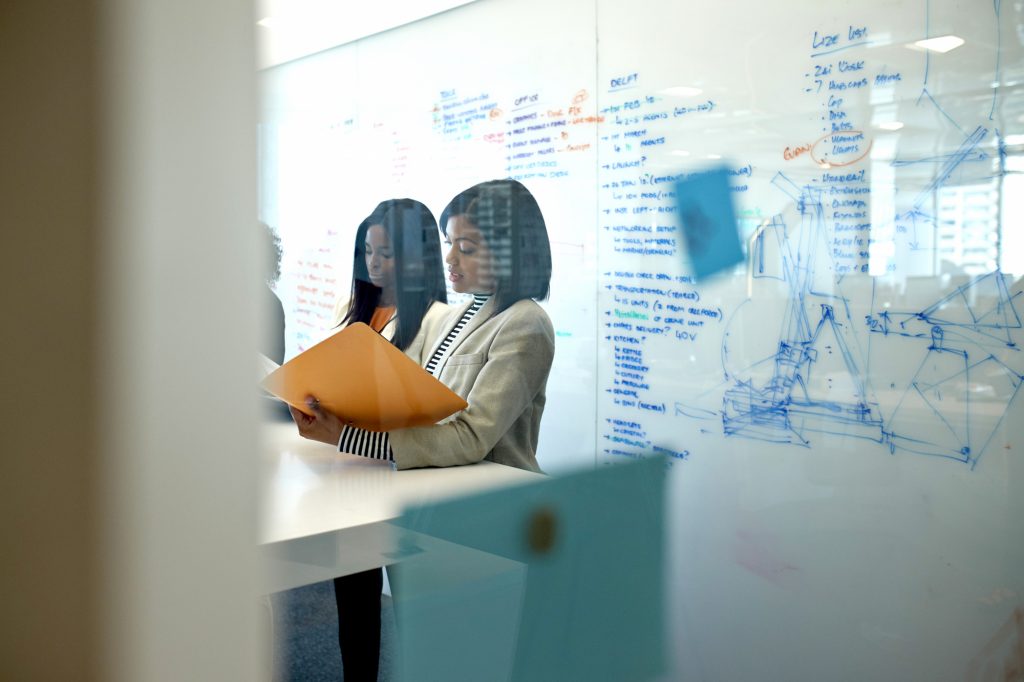
Had you somehow been fortunate enough to have slept through 2020, you would have awoken to find that global equities had risen by nearly 16% during the year and could be forgiven for thinking that the world economy was in rude health. The reality is, as we are all too aware, altogether different with buoyant markets owing their gains mostly to the monetary and fiscal measures put in place to combat the effects of Covid-19, and partly to an optimism that that this year will be far better for businesses than last. A continuation of loose monetary policy also helped provide positive returns for bonds. Gold benefitted from its safe-haven status and a fear of rising inflation to post a 20% return for the year. Commercial property and Oil suffered steep losses as a direct result of lockdown measures.

Market Update Global equity markets were generally down last week, with weaker than expected earnings reports seeing a sell-off on Friday. The only positive regions in Sterling terms were Emerging Markets and Japan, both +0.1%. European equities fared the worst, down -2.1%, with the Euro falling -1.4% vs Sterling significantly contributing to the weak performance. […]

Market Update Major equity indices enjoyed a positive start to the new year. UK equities provided the best returns up +6.4% for the week. UK equities were supported by a steepening yield curve and rising oil prices, since the market is overweight to the Bank and Energy sectors. Globally, Energy was the best performing sector […]

Market Update Most major equity market indices ended the year on a positive note. Global stocks gained +0.2% in Sterling terms over the last two weeks of trading to close the year up +12.4% in Sterling terms. Over the year, due in large part to a Tech rally following the early pandemic crisis, US stocks […]

Market Update A generally positive week for equities in local currency terms was slightly negative in Sterling terms as markets became increasingly optimistic about a UK trade deal with the EU, sending the Pound higher. UK equities were the notable exception for the week, though down only -0.1%. Overall, global stocks gained +1.7% in local […]

Market Update Like clockwork positive vaccine news, this time FDA confirmation of Pfizer/BioNTech results, buoyed markets in the early part of last week. However some of these gains were reversed due to the worsening condition of both Brexit and Covid-19 cases. UK equities were flat for the week, however more domestically exposed mid-caps fell as […]

November featured plenty of good news for markets: The US election returned multilateralism to the Oval Office, Covid-19 vaccination is set to begin before the year’s end and S&P 500 companies have surpassed earnings expectations. In the background, central banks have vigorously reaffirmed their commitment to keep markets lubricated and the mounting debt cheap. It […]

Market Update Markets continued the rally stoked by the early November news of successful Covid-19 vaccines. US markets are now at all-time highs having rallied +1.7% last week, although US Dollar weakness meant the return for UK investors was +0.6%. UK equities were in fact the strongest performing major region, rallying +2.9%. Overall global stocks […]

Market Update Once again vaccine optimism supported global equity markets; this time it was the turn of the AstraZeneca vaccine, which can be more readily stored and transported. Global equities rose +2.1% for the week in Sterling terms. Financials and Energy were the two best performing sectors, as both sectors would benefit greatly from a […]

Market Update Global equities rose +0.4% in local currency terms, although currency movements eroded this gain for British investors, leaving global equities down -0.2% in Sterling terms. Equities were once again supported by vaccine news, with Moderna’s vaccine showing similar levels of efficacy to the already announced Pfizer data. European equities rose for the third […]

Market Update Global equities rallied strongly last week on news that early data shows Pfizer’s Covid-19 vaccine, one of many in development, is effective in 90% of cases. Equities rallied sharply in the first half of the week before ceding some of their gains later on as attention turned back to the near-term, where Covid-19 […]

Dear reader,This note was written mid-day on 3 November, just a few hours before the US presidential election result. Naturally, we were tempted to delay, to get a clearer view of the earth-shattering events surrounding the world’s biggest economy and longest standing democracy. However, we decided to consider that the US presidential election could be […]
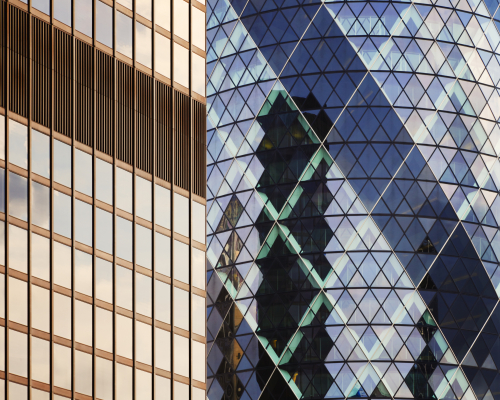
Market Update Global equities rallied last week with US stocks in particular posting their largest weekly gains since April as investors reacted to the increased possibility of a divided government, with a potential Biden win and continued Republican control of the Senate. In Sterling terms US stocks were up +5.6% while both UK and Global […]

Market Update Global equities suffered their worst week since March, with the sell-off attributed to renewed virus related lockdowns across most of Europe and the final stretch of the hotly contested US presidential campaign. Global and US equities were both down -5.0%. This was despite the fact that Tech giants Alphabet, Amazon, Apple and Facebook […]

For the first time since March, the Coronavirus narrative is truly gripping markets.

Market Update European equities sold-off as economic data begins to point towards a stalling recovery and coronavirus infection trends point towards tighter restrictions. European equities were down -1.4% in local currency terms, narrowing to a -1.2% loss in Sterling terms. UK stocks improved in the second half of the week, buoyed by increased employment support […]

Market Update Global equities were narrowly down -0.3% on the week in local terms, however Sterling weakness once again boosted returns to British investors. The US was the best performing region, up +1.0% in Sterling terms. This coming week will kickstart earnings season in the US, where earnings are expected to fall sharply relative to […]
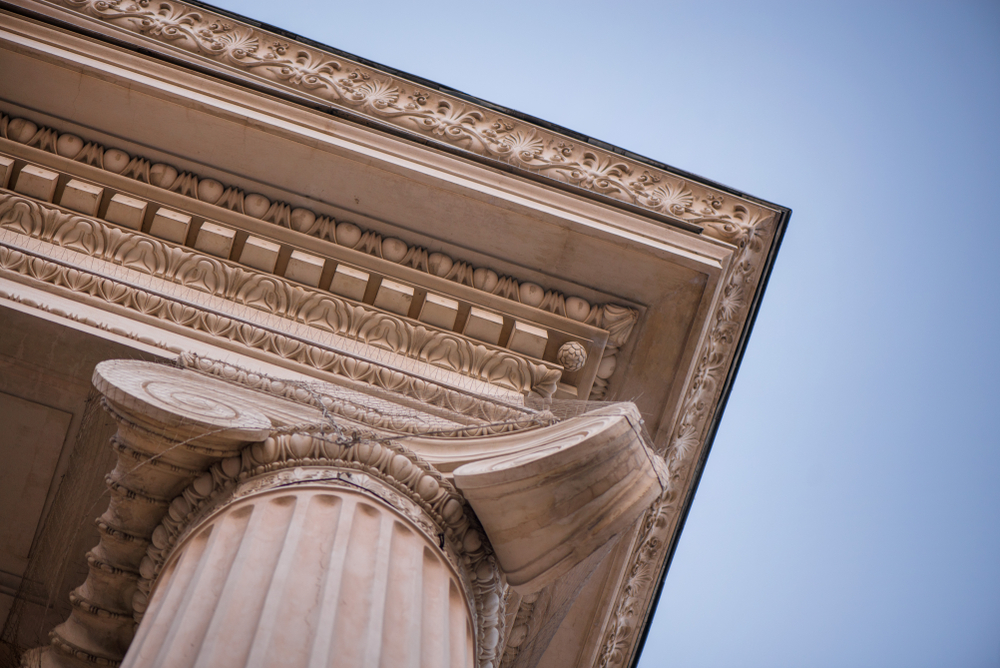
Read our Full Weekly Market Update Market Update A reduction in uncertainty in the United States helped US equities to their best week in three months, up +3.2% in Sterling terms, as investors begin to price in a Biden presidential victory. UK stocks looked past weaker than anticipated GDP growth to rally +2.0%. Investors appeared […]

Covid-19 comes at the back of 11 years of sluggish growth, rock-bottom interest rates but absence of inflation, negative global capital investment, manifest income inequality, stagnant wages and low consumer confidence levels, often dubbed “Secular Stagnation”. It is more of an understatement to say that these pressures were “greatly exacerbated” by the pandemic, and probably more accurate to say that the additional strain of the worst quarter for economic output since the end of World War II brings significant dangers to the stability of the global economic and financial systems.

The persistent dichotomy between stock market performance and economic performance has been a particularly hard puzzle for investors. While it is very clear that the previous 12-year economic cycle has undoubtedly come at an end, the financial cycle, thanks to central banks, has survived a five standard-deviation event (1 in 3.5 million probability), and continues unabated. With the global economy in turmoil, can stock and bonds be trusted to create or even maintain wealth?

Global stock markets built on the astonishing rebound from the Spring to post further, albeit more modest, gains during the third quarter of the year. Global stocks rose by nearly 5% in Sterling terms. That said, again the rises were far from uniform geographically, with US and Japanese equities posting strong returns whilst Europe struggled to a marginal positive return and UK equities lost further ground. Aside from Equities, Gold started the quarter strongly, but then sold off in early August as safe haven assets including the US Dollar retracted in less volatile markets.

Read our full Market Update Market Update Major global markets were generally positive in local currency terms, but a strengthening Sterling, up +1.5% for the week against the US Dollar, eroded gains for British investors. US stocks recovered from their four-week losing streak to rise +1.5% in US Dollar terms, but would return -0.2% due […]

Read our full Market Update Week 39 Market Update Major global markets were negative in local currency terms, whilst a weaker Sterling which was down -1.3% for the week against the US Dollar and -0.4% against the Yen ensured some pockets of growth for British investors. US stocks moved into correction territory (down 10% from […]

Read Our Full Market Update Market Update Globally stocks were negative in local terms for the second successive week, losing -1.2%. Sterling recovered some of its losses against the US Dollar, up +0.9% despite comments from the Bank of England suggesting an increased likelihood of rate cuts. UK stocks outperformed global stocks in Sterling terms, […]

In a decision for the history books, the US Federal Reserve, the world’s de facto central bank, abandoned a hard 2% inflation target in favour of a more flexible regime, attempting to prevent deflation resulting from secular stagnation exacerbated by the persistent COVID-recession. Inflation has finally been chosen as the weapon of choice against mounting […]

Read our full Market Update Week 37 Market Update Globally stocks were negative in local terms, losing -1.3% for the week. However Sterling weakness, which saw it worst week since March, saw global stocks rise +2.2% in Sterling terms. UK stocks performed well gaining +4.0% for the week, with Housebuilders and Healthcare both rising by […]
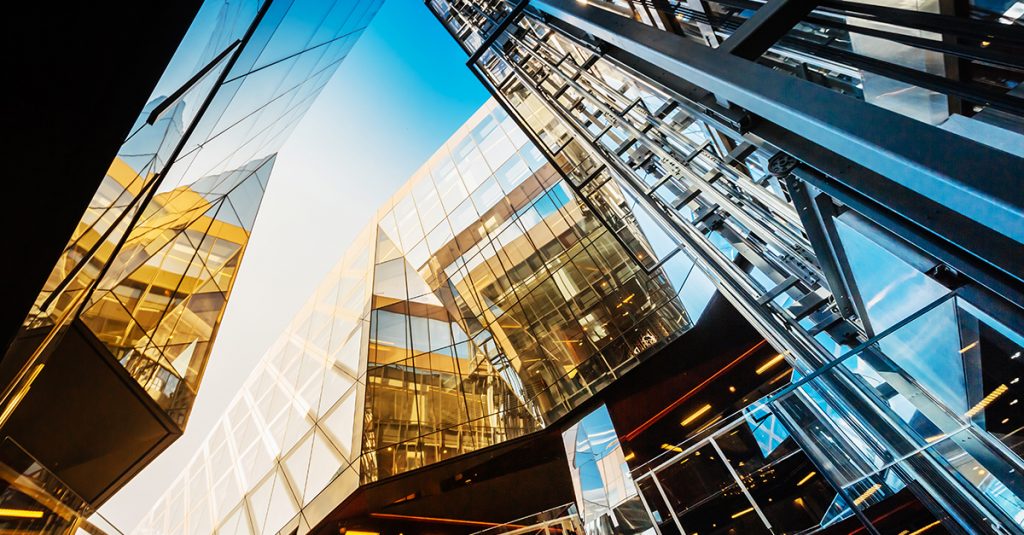
Read our full Market Update Week 36 Market Update US Tech stocks saw their momentum reversed on Thursday, dragging other sectors and regions into negative territory for the week. Apple, Amazon, Alphabet (Google), Microsoft and Facebook all fell between -4% and -8% on Thursday, with US equities as a whole down -3.5% on the day. […]

Read our full Market Update Market Update US equities climbed +1.4% last week with, major indices setting new record highs, as US Federal Reserve Chairman Jerome Powell announced a shift in how the Fed views inflation, saying it won’t increase interest rates to respond to low unemployment levels and also won’t worry as much about […]

Read our full Market Update Market Update Global equities traded higher last week, up +0.5% in Sterling terms. US equities climbed +0.9% with housebuilders, buoyed by promising housing data, leading the way. Other developed markets did not fare as well. UK and European stocks were down -1.3% and -1.1% respectively, driven by both the negative […]

Read our full Market Update Market Update All major developed market equity indices posted positive returns last week, while Emerging Market stocks closed marginally down. Global equities gained +0.8% in Sterling terms and the S&P 500 traded +0.2% higher, with the index just below its February peak. Japanese stocks rallied +4.0% in Sterling terms, partly […]

For the better part of the last three years the core of our investment policy has been simple: “Don’t fight the Fed”. As accomplished economist Mohammed El-Erian put it, Quantitative Easing is not the biggest game in town, it is rather the only game in town. Prices for risk assets are almost completely dependent on […]

Read our Full Market Update Market Update Bucking the trend of two consecutive weeks of falling equity markets, all major indices were positive last week. Global equities gained +2.7% in Sterling terms, with the Nasdaq Composite reaching new highs, and the S&P 500 now close to its February peak. After a poor week last week, […]

Read our full Market Update Week 31 Market Update Major indices closed down for a second week running, with investors reacting to a flood of quarterly earnings reports and some prominent economic data. US corporate earnings were in the spotlight during the week, with tech giants Facebook, Amazon, Apple, and Alphabet reporting mostly healthy gains […]

MARKET UPDATED Despite recent strength, equities closed lower last week as tensions between the US and China were ratcheted up, with the forced closure of the Chinese consulate in Houston and the arrest by the US of a Singapore national who has admitted spying for China. In response China has ordered the US consulate in […]

Please read our full Market Update Market Update Stocks posted mixed returns last week, with strong performance in the US as the NASDAQ 100 set new record highs, while UK and Japanese stocks closed down -0.9% and -1.8% in Sterling terms respectively. Emerging Market stocks performed well, gaining +2.4% for the week. Technology, Telecoms and […]

A quarterly report is not normally a difficult document to put together. Usually it consists of an account of the trending state of affairs, the more possible outcomes and risks to those outcomes. In the past few years, these reports were actually made easier. The US Federal Reserve was underwriting risk at such an unprecedented scale, nearly unwavering for more than a decade, in a manner which suppressed all major hazards to the economy and financial markets. Ever since 2010 the question, repeatedly, had been: “With opportunity costs driven down so much for so long, whatever can bring markets down?”

Global stock markets staged a remarkable comeback in the second quarter with the MSCI World Index up nearly 20% in Sterling terms. Whilst not recovering all of the losses from the high point in March prior to widespread lockdowns, global equities are nonetheless at higher levels than at the start of the year. Given the absence of any meaningful advances in the treatment of or vaccination for COVID-19 and that the corporate world is temporarily being held together by a variety of hastily created measures of government support, this optimism could be regarded as being somewhat misplaced.

In the past few weeks, we have been experiencing a flurry of better-than-expected economic data, especially in the US, while global equities remained near the recent high levels they have been trading at for almost a month. A casual read of the situation could be that the markets had run ahead of themselves, and as […]

Please read our full Market Update Market Update Stock markets closed up last week, with the technology-heavy NASDAQ 100 even reaching an all-time high. Cyclical sectors such as Oil and Financials lagged as economic conditions remain weak and second wave fears continue to build, with increased use of local lockdowns. The rally in risk assets […]

Read our full Market Update Market Update Stock markets closed down last week on the back of a COVID-19 case count resurgence. Growth stocks outperformed value stocks as fears of a second wave of the virus caused market participants to raise their expectations of a second lockdown. Banking stocks were particularly volatile as news that […]

Read our full Market Update Market Update Stock markets rebounded last week, posting gains in both local currency and Sterling terms, with news that the Fed will be expanding its corporate bond buying programme sending stocks higher. The move from ETF purchases to individual bond issues by the Fed has been viewed as a significant […]

Read our full Market Update Market Update The rally in risk assets came to a grinding halt last week on fears of a second wave of infections in the US, with virus rates up in many states, and the Federal Reserve offering up a gloomy economic outlook. Stocks are also down this morning on news […]

The “right” fundamentals Often the first thing we are taught about something, especially if it comes from someone with authority, like a parent, a teacher or our experienced financial adviser, is taken as a “fundamental” truth. In psychology, this is called the “primacy effect”. Any other “truths” that contradict or seek to modify that first […]
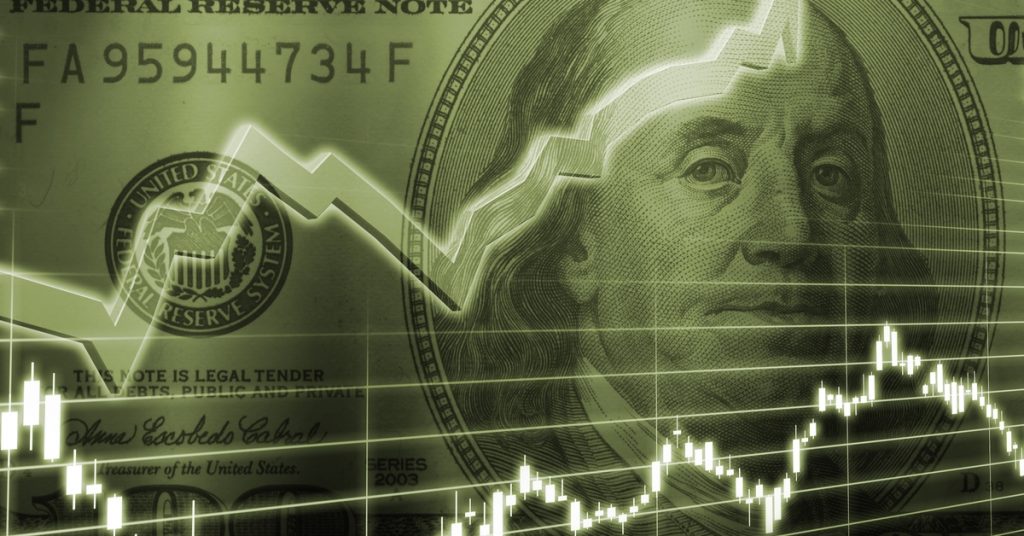
Equities saw a third straight week of strong returns, with Japan the only region experiencing losses in Sterling terms (down -1.6%), although it was also positive in local terms (up +3.1%). US ADP National Employment figures showed fewer job losses, causing an initial spike in equities, which continued later in the week as it was […]

For a second week in a row it was green across the board for equities, as global stocks gained +2.4% in Sterling terms and +3.7% in local terms. European stocks were amongst the best performers for a second week, with Japanese equities performing equally well. Early in the week markets focused on the US returning […]
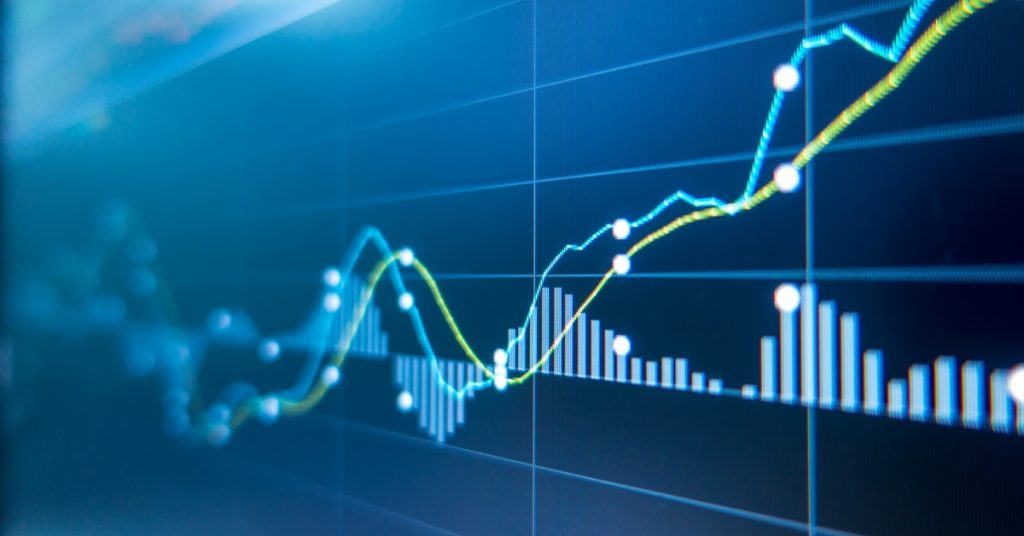
Hopes for a COVID-19 vaccine saw equity markets rally across the board last week, with global stocks up +2.8% in Sterling terms and +3.2% in local terms. EU equities led the way in Sterling terms, up +4.1%, with UK equities also experiencing strong returns of +3.4%. US equities gained +2.8%, although Emerging Market equities were […]

Read our full monthly here Should we even be investing in this “crazy” market? Volatility is one of our biggest enemies in investing. It is very difficult to wake up one morning and look at a 20% drop in one’s life savings, a move that may have happened in a matter of days. An inevitable […]

Equity markets sold off across the board last week, declining initially amid fears of a secondary wave of infections and a pessimistic outlook from the Fed, although there was a sharp recovery later in the week on additional stimulus expectations. In local terms global equities fell -2.5%. However due to Sterling weakness, in part due […]
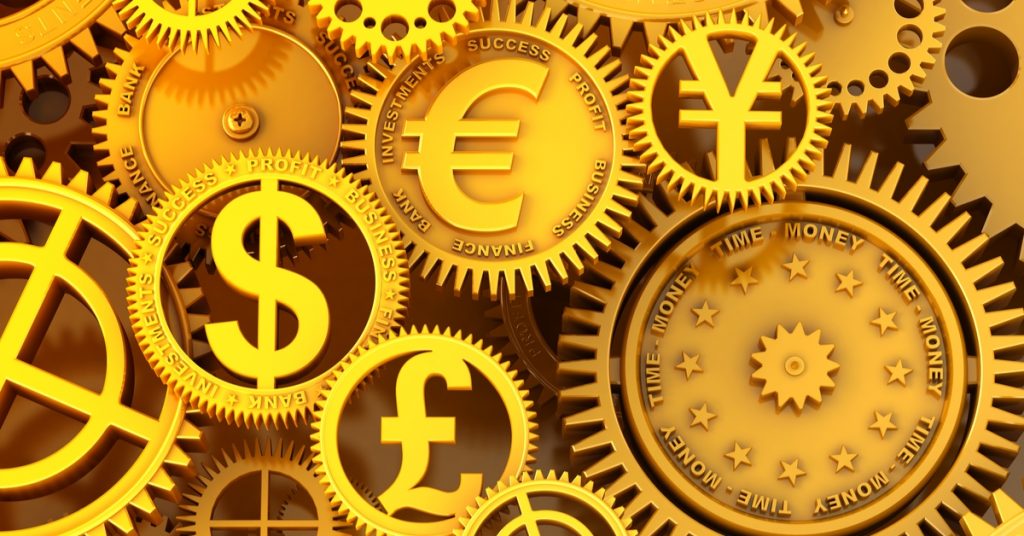
Equity markets continued to steadily recover last week, with all regions positive or flat in Sterling terms and only Emerging Market Equities down in local terms. Markets have been reacting positively to the gradual opening up of economies across the world, even with some signs that the Coronavirus is re-emerging in areas such as Wuhan […]

Markets rallied throughout last week, however US equities closed lower on Friday and down -1.6% in Sterling terms for the week, with other regions following suit this morning, on concerns that tensions between the US and China could escalate due to accusations from the US administration over the origins of the Coronavirus. For the week, […]

After several weeks of recovery, equities fell in all major regions last week. Due to weak Sterling, both US and Japanese equities were flat for UK investors. However European (-0.5%), UK (-0.5%) and Emerging Market (-1.1%) equities were all negative in Sterling terms. The Energy sector was the best performing globally, even though the outlook […]

The month in review: March Market Meltdown Q1 2020 saw the worst quarter for risk assets since the Global Financial Crisis as the dual shock of the COVID-19 pandemic and the Saudi Arabia-Russia oil price war wiped out equity markets and pushed credit spreads higher. Capital fled to the sovereign bond market with Treasury yields […]
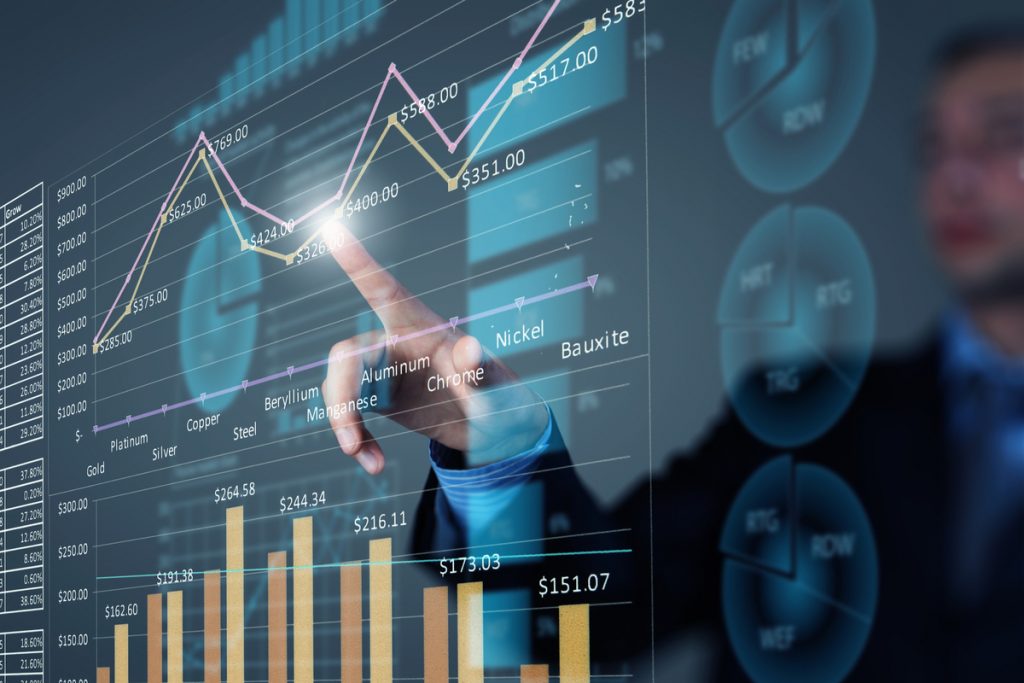
Aside from UK equities, major equity market regions were positive in local currencies, boosted on Friday by reports that suggested a drug had shown positive results against COVID-19 in a clinical trial, as well as some relaxing, both planned and enacted, of restrictions in several countries. Sterling strength meant that some returns for UK investors […]

At our Investment Committee meeting in the first week of January we discussed amongst other things the heralded resolution of the trade war between the US and China, the fact that the US Federal Reserve was printing more money, and the renewed optimism that came from a stable government here in the UK. Cautious bullishness on risk assets was the tone of the meeting. Looking back at our discussion documents from that meeting, our ‘Wall of worry’ chart which details the things which we consider to be possibly obstructive to stock market gains, did not even mention coronavirus. In other words, we have experienced a true ‘Black Swan’ event. Global stock markets fell by 20% over the first quarter (around 15% for a Sterling based investor) having lost as much as 32% by mid-March. Gold performed its role as a safe haven rising 12% in Sterling terms, whilst Gilts rose by over 6%.
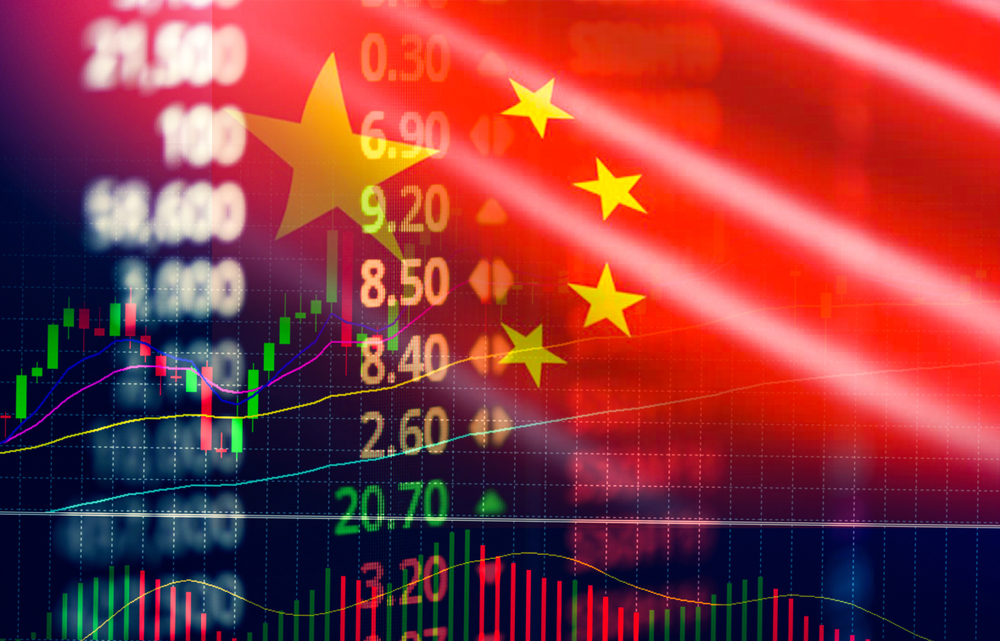
At our Investment Committee meeting in the first week of January we discussed amongst other things the heralded resolution of the trade war between the US and China, the fact that the US Federal Reserve was printing more money, and the renewed optimism that came from a stable government here in the UK. Cautious bullishness on risk assets was the tone of the meeting. Looking back at our discussion documents from that meeting, our ‘Wall of worry’ chart which details the things which we consider to be possibly obstructive to stock market gains, did not even mention Coronavirus. In other words, we have experienced a true ‘Black Swan’ event. Global stock markets fell by 20% over the first quarter (around 15% for a Sterling based investor) having lost as much as 32% by mid-March. Gold performed its role as a safe haven rising 12% in Sterling terms, whilst Gilts rose by over 6%.

Last week (Friday 3 to Monday 13 April) global stocks rose on the back of an improved narrative regarding the Coronavirus pandemic, as markets see a ‘flattening of the curves’ and a reduced pace of new infections, while many countries weigh reopening their economies. Boris Johnson’s survival helped improve the narrative both for the UK […]

By regular standards it was a rocky week for equities, which rallied 2-3% in the first few days, but fell 4-5% later on. However in comparison to preceding weeks market moves were somewhat muted, perhaps because the news-flow has provided little further clarity as to the time-scale and magnitude of the COVID-19 crisis – markets […]

Read our full Market Update Stock markets ended their losing streak with many major indices posting their largest daily gains since 1933, or indeed for many on record, on the Tuesday of last week. Reasons for the rally include investors rebalancing multi-asset portfolios, short positions being covered and the US fiscal strategy offering downside protection […]

Read Our Full Market Update Market Update The market sell-off continued last week, despite government pledges of further fiscal support and central bank liquidity injections, as countries moved into lockdown and tightened border controls to contain the coronavirus outbreak. UK equities were down -3.2% with Housebuilders, Industrials and Energy companies experiencing the brunt of the […]

Since my note on Monday last week, markets have continued to be extremely volatile with swings of enormous magnitude from one day to the next. As I write this note the S&P 500 is up 6%, having lost 12% yesterday after a gain of 10% last Friday. Such extreme volatility confirms that traders and investors […]

Read our full Market Update Week 11 Market Update UK equities were down over 8% this morning, with the FTSE 100 down -32% over the last month as markets are now starting to price in a coronavirus induced global recession. Oil prices continued to slip, down nearly 50% YTD in USD terms. This fall has […]
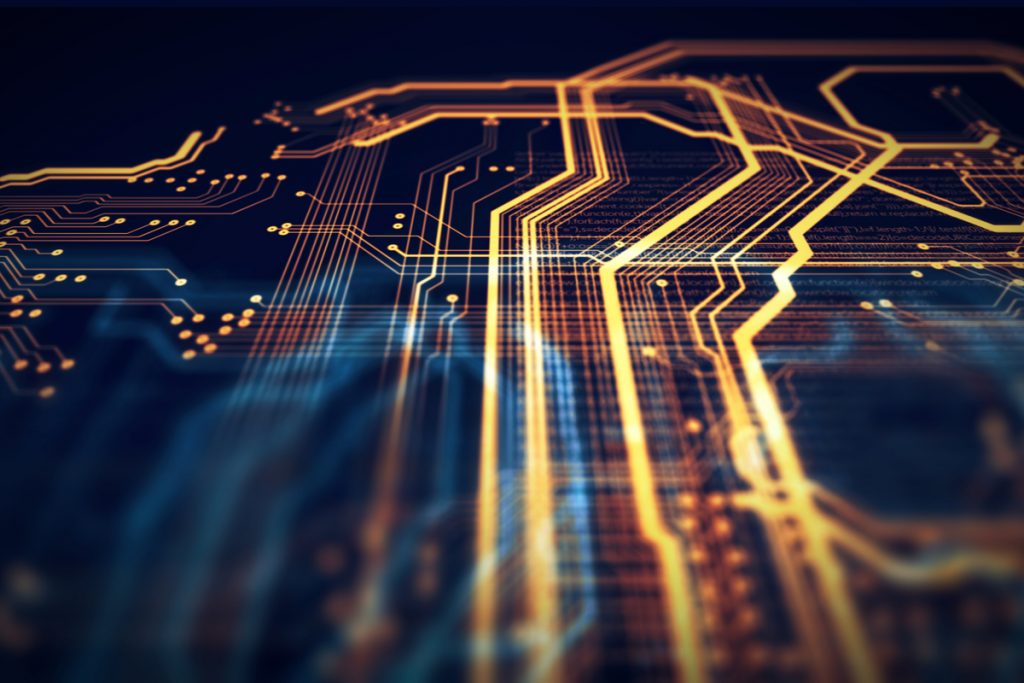
Monthly Market Update Read our full Monthy Market Update March 2020 The month in review: COVID-19 disruption supresses risk appetite February was a tale of two distinct periods. Initially, with the Federal Reserve and the ECB printing money and an economic slowdown more probable than an imminent recession, global stocks continued to climb, with major […]

Please check out our full Market Update Week 10 Market Update UK equities were down nearly 9% this morning, with the natural resource and banking heavy indices experiencing weakness for three prime reasons. First, coronavirus fears continued to rise as Italy quarantined 16 million residents, with investors fearful of this impact on the global economy […]

Figure 1. US stock market returns in the last two weeks. The most significant development last week (other than the continued spread of the Covid 19 virus itself) was the 0.5% emergency rate cut announced by the US Federal Reserve which received a luke warm reception from markets. Over the last ten years we have […]

Download our Full Market Update here Market Update Global stocks saw a sharp sell-off last week after COVID-19 cases spiked in Italy, Iran and South Korea, pushing recession fears higher and expected corporate earnings lower for 2020. Global stocks fell -9.4% in Sterling terms, with US equities experiencing the quickest correction since the Great Depression, […]

Read our full Market Update Week 8 Market Update Fears that COVID-19 could weigh on consumption and global growth increased last week as the number of cases spiked in both Iran and Italy. Concerns that the virus could impact critical global supply chains have increased, with tech titan Apple widening their earnings estimates given the […]

Following a flat third quarter, global equities rallied to the end of the year with the MSCI World index up over 7% in local currency terms. Returns for unhedged Sterling based investors were broadly flat as the Pound strengthened following the Conservative’s decisive general election victory. The late final rally was primarily driven by renewed optimism for a ‘phase one’ trade deal between the US and China, and left global equities up 25% for the year. It is of course important to note that, by contrast, markets ended 2018 in very pessimistic mood as the Fed continued to raise interest rates, and therefore a global equity return figure of around 8% from September 2018 is a more useful measure of equity returns.

Market Update Despite concerns about coronavirus continuing to dominate headlines, markets on the whole edged up last week, with global equities gaining +1.2% in local terms, which translated into a +0.1% gain for UK investors. The resignation of UK Chancellor Sajid Javid saw Sterling rise along with gilt yields. Javid’s replacement, Rishi Sunak, is expected […]

Read our full Market Update Week 6 Market Update Global stocks saw strong gains last week, returning +2.7% in local currency terms and +5.0% in Sterling terms after the Pound depreciated versus most major currencies. The rally was driven by hopes that coronavirus fears had been overstated and US earnings coming in ahead of expectations. […]

Read our full Monthly Market Update February 2020 The month in review: Coronavirus fears weigh on equity markets Despite a positive start to the year, January was a negative month for risk assets. Earnings marginally outperformed expectations in the US, with Amazon and Apple rallying on stronger than expected revenue growth and J.P. Morgan posting […]

Read our full Market Update Week 5 Market Update Coronavirus fears saw markets sell-off across the board last week, with global equites returning -3.1% in Sterling terms. More cyclical sectors such as energy and materials were worst hit, while stocks such as utilities and consumer staples which can behave like bond proxies were largely flat. […]

Read our full Market Update Week 4 Market Update Equities closed the week lower as an outbreak of the coronavirus in China made global headlines. Global stocks fell -0.8% in local terms, which translated into -1.2% in Sterling terms. UK markets fell -1.2% with Financials and Energy the worst performers. Oil has been particularly affected […]

Read our Full Quarterly Outlook The Power of the Cycle John Kenneth Galbraith, an irreverent but brilliant economist best known for his work on the Great Crash of 1929, famously lamented about his own profession: “the only function of economic forecasting is to make astrology look respectable”. As always, we toyed with the idea that […]

Read our full Market Update Market Update Risk assets gained last week on the signing of the ‘phase 1’ trade deal between the US and China. Global stocks were up +1.9% in Sterling terms and +1.6% in local terms, reaching greater all-time highs. Returns for Sterling investors were pushed higher as the Pound fell on […]

Read our Full Monthly Market Update Global economic data is mixed. On the one hand, leading indicators and trade indices suggest that the global economic deceleration might be ending, and growth bottoming out, at least for this part of the cycle. On the other hand, manufacturing data persistently indicates contraction, especially in capital goods orders, […]

Read our full MWM Investment Newsletter Winter 2020 Following a flat third quarter, global equities rallied to the end of the year with the MSCI World index up over 7%. Returns for unhedged Sterling based investors were broadly flat as the Pound strengthened following the Conservatives’ decisive general election victory. The late final rally was […]

Read our full Market Update Market Update Global stocks were up +0.8% last week, recovering part of the losses observed after the US-Iran conflict sent investors fleeing from risk assets; tensions have however faded slightly, and it appears that a solution may be reached that does not involve further military intervention. The best performing region […]

Read our full Market Update Market Update U.S. stocks declined modestly last week, after a sharp rally at year-end and a new record high on the first trading day of the year, as tensions rose between the US and Iran following an airstrike in Iraq that killed a prominent Iranian general. US equities were down […]

Read our full Market Update Market Update Global stocks posted strong gains last week, up +1.3% in local currency terms and +3.7% in Sterling terms after the Pound depreciated versus other major currencies. Sterling fell shortly after the UK general election when Boris Johnson signalled the UK will leave the EU with or without a […]

Read our full Market Update Market Update Sterling rallied last week after the Conservative Party won 365 seats in the UK general election, securing a majority of over 80. The Pound was up +1.5% vs the US Dollar and +0.9% vs the Euro, with the result being that although global stocks were up in local […]

Read our full Market Update Market Update A second straight week of strong performance for Sterling, up +1.7% vs the US Dollar and +1.2% vs the Euro as markets further priced in a Conservative victory at the coming General Election, once again mean that although global stocks were up in local terms, UK investors experienced […]

Global equities were positive last week, however energy stocks fell precipitously on plummeting oil prices, so that overall in local terms returns were +0.8%. Positive sentiment was boosted as the off-again, on-again negotiations between the US and China appear to be on-again, while a revised estimate of Q3 GDP showed the US economy expanded at […]

Global stocks were down -0.4% in local currency terms last week, however returns for UK investors were +0.3% after Sterling depreciated versus major global currencies, down -0.5% and -0.3% versus the US Dollar and the Euro respectively. US, UK and European stocks returned +0.3%, +0.4% and -0.3% over the week, whilst Emerging Markets equities posted […]

Markets welcomed signs of an easing in geopolitical tensions in October, with risk assets generally outperforming traditional safe havens. The US and Chinese authorities moved closer to agreeing a partial deal on trade, while the UK once again edged back from the precipice of a no-deal Brexit. Global central banks reiterated their dovish stances and […]

Market Update Global stocks rose +0.7% in local currency terms, which translated into a -0.4% fall in Sterling terms. Returns were mixed in local terms, however were universally down in Sterling term as the currency rose +1.0% vs the US Dollar to just short of the $1.30 mark. Emerging Markets had a challenging week falling […]

Read our full Market Update Week 45 Market Update Global stocks rose +0.8% in local currency terms and +2.1% in Sterling terms in yet another positive week for risk assets. Meanwhile yields rose sharply and Gold had its worst week in three years as there was a flight from defensive assets. In Sterling terms US […]

Read our full Market Update Week 44 Market Update Global stocks rose +1.3% in local currency terms and +0.4% in Sterling terms in a positive week for risk assets. Sterling rose against major currencies, up +0.9% against the US Dollar and +0.1% against the Euro, against a backdrop of polls suggesting the Conservative Party hold […]

Read our full Market Update Week 43 Market Update Global stocks were up in both local currency and Sterling terms last week, however due to a fall in the currency versus other major currencies, Sterling-based investors enjoyed a greater gain; global equities were up +2.1% in Sterling terms and +1.3% in local terms. US stocks […]

Read our full MFP Quarterly Investment Outlook Q4 Ghosts of Japan Growth has been consistently slowing across the globe. In the past two issues, we dealt with the impact of China’s slowdown, as the world’s marginal buyer goes through the necessary pains of transformation and the impact of elongated cycles on growth. In this outlook […]

Read our full Market Update Week 42 Market Update Global stocks gained during the week in local terms, however they fell in Sterling terms after the Pound rallied versus major currencies as the UK and EU agreed a Brexit deal; one not dissimilar to Theresa May’s. However, this deal still needs to be approved by […]

Read our full Market Update Week 40 Global stocks gained throughout the week in local terms, however they fell in Sterling terms after the Pound rallied on news of a potential “pathway” to a Brexit deal. Global stocks fell -1.5% in Sterling terms, with the decline led by weak performance from US and Japanese equities; […]

Read our full MWM Investment newsletter Autumn 2019 Equity markets across the world ended the quarter broadly where they began having recovered from a slight loss of confidence during August. This stability came despite no improvement in economic data, and a further fall in government bond yields signalling a cautious economic outlook. In a similar […]

Read our full Monthly Market Blueprint October 2019 Global economic data suggest that the slowdown in global manufacturing (especially capital goods) is accelerating, and the services sector is now following this trend. The US has joined the cohort of large countries which now see their economy slow. Inflation remains at bay and unemployment in developed […]

Read our full Market Update Week 40 Global stock markets fell throughout the week, both in local currency terms and Sterling terms. UK assets led the decline, down -3.5% on the news of weaker economic data out from the services industry. US stocks were down up -0.4% in Sterling terms, with similar returns observed in local […]

Market Update Major developed market equities gained in Sterling terms this week, due in large part to currency effects. Many of these indices actually fell in local currency. UK equities grew by +1.1% led by utilities and healthcare sectors. US stocks were up +0.4% in Sterling terms but had fallen -1.0% in local currency, this […]

In a sluggish week for equities, equities fell in both local and Sterling terms. US, Emerging Markets and European stocks each fell -0.6% in Sterling terms, however European stocks were up marginally +0.1% in local terms. Japanese stocks rose slightly, by +0.5% in Sterling terms, while UK stocks fell -0.3%. Over the week Sterling fell […]

Read our full Market Update Week 37 Market Update Global stocks were down -0.2% last week in Sterling terms and up +1.3% in local currency terms as Sterling appreciated versus other major currencies as Boris Johnson adopted a softer stance on the Irish border; increasing the likelihood of a deal being reached before the October […]

Read our full Monthly Market Blueprint Sept 2019 •Global economic data continue to indicate contraction in global manufacturing and a slowdown in services. The US has joined the cohort of large countries which now see their economy slow. Inflation remains at bay and unemployment in developed markets is near all-time lows. Yet consumption is dented […]

Read our full Market Update Week 36 Market Update Global stocks were up last week, gaining +1.9% in local terms and +0.9% in Sterling terms as the Pound appreciated after the House of Lords passed a bill giving parliament the power to, in theory, prevent a no-deal Brexit. In addition to this, the Prime Minister […]

Read our full Market Update Week 35 Market Analysis There were gains across the board last week, as China indicated it had no immediate plans to retaliate to the latest round of US tariffs. In Sterling terms, global equities were up +3.0%, led by US equities which were up +3.7%, as trade-sensitive technology and industrial […]

Read our Full Market Update Week 34 Market Analysis Last week equities continued to decline, both in local and Sterling terms. Emerging Markets led the decline, falling -1.5% in Sterling terms. US, UK and Japanese stocks fell -0.9%, -0.2% and -0.9% respectively. European stocks were flat in Sterling terms. Globally, the best performing sectors were […]

Read our full Market Update Week 33 Market Analysis Last week saw equities decline globally, both in local and Sterling terms. US stocks recorded a third straight week of losses as trade and growth worries unsettled investors, down -1.6% in Sterling. The typically defensive consumer staples and utilities sectors performed best within the S&P 500 […]

Market Analysis This week saw stocks suffer globally, with global stocks down -1.1% in Sterling terms. US equities suffered their worst week thus far in 2019 as market sentiment was dealt twin blows by disappointing signals from the Fed and the announcement of new tariffs on imports from china. US equities were down -1.2% for […]

Market Analysis This week saw strong equity market returns, with global stocks up +2.0% in Sterling terms. US equities were up +2.6% for the week, with returns enhanced by Sterling depreciation versus the US Dollar and earnings outperformance from both Google and Starbucks. UK, European and Japanese equities were up +0.6%, +1.1%, and +0.5% respectively. […]

Market Update This week saw mixed equity returns, with global stocks down -0.3% in Sterling terms. Emerging Markets posted a strong gain of +1.3%, which was supported by the Sterling depreciation observed across the period, while US stocks were down -0.7% for the week. Japanese equities fell -0.8% in local currency, however, the GBP/JPY rate […]
Global equity markets continued to rise during the second quarter of the year, with global equities now returning over 20% in Sterling terms year to date. Similarly to the previous quarter, this market rally occurred despite any real optimism about the state of the global economy although some caution could be observed in the price […]

After a decade of unprecedented monetary stimulus, we have failed to see global growth rates anywhere near their pre-crisis levels. At the same time, however, we have not seen a recession. The world seems to be ‘chugging along’ as output is pressured on all sides. So is it the Fed that killed economic cycles? Read our […]

Read our full Market Update Week 28 Market Update Despite a mixed week for equities, the S&P 500 set new records on Friday, closing above 3,000 for the first time at 3,013.77. US equities gained +0.4% in Sterling terms, with all other major regions down. Emerging Market equities fell the most, down -1.2%, European equities […]

Read our full Market Update Week 27 Market Update US equities hit record highs last week as data on Wednesday showed the US trade deficit rose to a five-month high while services sector data showed a slowdown in activity, increasing hopes that the Fed would turn more dovish. These hopes were curtailed on Friday as nonfarm […]

According to data from the Financial Times and Bloomberg, investors have withdrawn more than £20bn from UK equity funds since the Brexit referendum. The number dwarves the £4bn estimated net inflows from ETFs during the same period. Outflows from funds and inflows from ETFs suggest that the “slow money” is moving away from UK equities, […]

The chart below shows the range of returns across top nine countries in the MSCI Emerging Markets index by market capitalisation. Combined they make up 88.6% of the indexas of the end of March. The vast majority of emerging market equity funds use this as their benchmark. The largest constituent in the EM index is […]

In the past few decades, one of the policy decisions that were key for investors was central bank independence. In the past, central banks constituted the arm of the Treasury. Run by top notch economists, their ability to review economic conditions independently has given them the power to reduce economic volatility by making sure that […]

Market Update Last week was torrid for stock markets as the US-China trade war continued to dominate markets. Over the weekend, China released a report on the state of US trade talks criticising the US for “exorbitant demands” and for “resorting to intimidation and coercion”. The result, again, was US equities led global equities lower, […]

Global economic data for June indicated that the global economic slowdown continues. Pockets of resilience can still be found where domestic demand is strong, but where external demand is driving the ecosystem, weakness persists. Data out of China have somewhat stabilised but are still soft. Weakness out of Europe and Japan indicates that the rebalancing […]

Market Update Equities finished the week strongly last week after selling off in the first few days. All regions were up slightly in local terms, however non-UK regions saw stronger returns in Sterling terms as the increasing likelihood of Boris Johnson winning the Conservative leadership election, and thus a hard Brexit, saw weakness in the […]

Market Update Equity markets rebounded last week as a combination of hopes of a delay to US tariffs on Mexico, and increased expectations for interest rate cuts in the US, saw positive performance every day from Wednesday onwards. Weak nonfarm payrolls on Friday of just 75,000, below expectations of 185,000, offered further evidence to those […]

Global economic data was still mixed in May. A resilient service sector and weak manufacturing suggested that, while internal demand for most countries continues to support the local economies, external conditions remain weak, affecting capital expenditure and investment. Data out of China have stabilised but weakness out of Europe and Japan indicates that the re-balancing […]

Market Update Global equity markets saw a rebound last week, with the exception of Emerging Market equities which were down -1.3% in Sterling terms, as the US-China tariff fight appeared to escalate. European equities saw the strongest gains, up +3.2%, with Japanese and UK equities up +2.4% and +2.3% respectively. US equity returns were relatively […]

Market Update Last week reports about trade wars oscillated between good news and bad, with tech stocks rallying on news of the US easing curbs on China’s Huawei Technologies, only to reverse as it emerged that the US is considering sanctions on other China tech firms. These events overshadowed the release of FOMC minutes which […]

Global economic data is showing signs of improving, with US GDP surprising to the upside, Spain posting impressive growth and Italy coming out of recession. Eurozone unemployment is at the lowest rate since before the Global Financial Crisis as exports have remained surprisingly strong thanks to Chinese stimulus. However there are continued risks for global […]

Market Update With slow progress in US-China trade talks prompting the US President to confirm a hike in tariffs on a further $300bln of Chinese goods to 25%, it was no surprise that equity markets suffered last week. All regions were down, although as often happens when concerns rise about trade, Emerging Market equities bore […]

Read our full Market Update Week 17 Market Update Last week saw diverging performance in global markets as US equities delivered +1.6% in Sterling terms, however Emerging Market, UK and European equities returned -0.8%, -0.3% and +0.1% respectively. Robust earnings from tech giants and a stronger than expected Q1 annualised growth figure of 3.2% meant […]

Read our full MWM Newsletter Spring-2019 Global stock markets regained their poise in the first three months of the year returning just under 10% in Sterling terms, and nearly recouping the losses from the final quarter of 2018. These gains were delivered despite continued concerns about economic growth which brought about a fall in sovereign […]

Read our full Market Update Week 15 Market Update Global equity markets were mixed last week following a period of strong returns. In Sterling terms global equities were down -0.1%, although in local terms were up +0.5%. In Sterling terms European equities were the only positive region, up +0.2%. US and UK equities were both […]

Read our full Monthly Market Blueprint April 2019 The global economic slowdown persisted, with conditions in the manufacturing sector contracting, especially for exporters. However some improvement in the service sector, and evidence of inventory depletion give hopes for cyclical economic rebound. Meanwhile trade wars, Brexit uncertainty, weaker Europe and growing suspicions of a sharper than […]

Read our full Market Update Week 14 Market Update Global equity markets saw a second consecutive week of positive performance, with US equities moving within 2% of their highs. Markets have ben in a positive mood since the Fed became more dovish early in the year, with positive signs on trade talks between the US and […]

Read our full Market Update Week 13 Market Update Global equity markets rallied last week, continuing the pattern of rising after a poor week. US equities lead the way, up +2.9% in Sterling terms, with European equities also performing well, up +2.1%. Emerging Market equities gained +1.5%, UK equities +1.1% and Japanese equities +0.4%. Sterling fell […]

Read our full Market Update Week 12 Market Update Global financial markets are starting to hint at an impending recession, with Japanese equities down over 3% in Monday’s trading, with other Asian stock markets also down markedly. Further, the US yield curve has inverted and last week 10Y Bund yields fell back into negative territory, although […]

Read our full Market Update Week 11 Global equity markets rallied last week, with Sterling returns positive in all major regions aside from Japan which was down -0.6%, although equities there did gain +1.9% in local terms. UK equities lead the way, gaining 1.8%, with European equities also up +1.4%, both buoyed by Parliament’s vote against […]

Read our full Monthly Market Update March 2019 The global economic slowdown persisted, with conditions in the manufacturing sector further deteriorating, especially for exporters. However some improvement in the service sector and evidence of inventory depletion give hopes for cyclical economic rebound. Risk asset divergence, a theme of the previous quarter, seems to have abated, as […]

Read our full Market Update Week 10 Market Update Sterling reversed the previous week’s gains, falling -1.4% vs the US Dollar and -0.3% vs the Euro, with few signs that negotiations between the EU and the UK are likely to yield an agreement on the future of the Irish border. There was also weak performance in […]

Read our full Market Update Week 9 Market Update Strong Sterling performance saw large-cap UK equities retreat last week, down -0.8%. Markets are growing more confident that either Theresa May’s deal will pass Parliament or that the date for leaving the EU will be delayed in order to avoid a ‘Hard Brexit’, which has fed […]

Read our full Market Update Week 8 Market Update Equities were on the whole positive in local terms last week, however strong Sterling performance meant that performance for non-UK stocks was mixed for UK investors. The Pound rallied 1.3% vs the US Dollar and 0.9% vs the Euro on a steady flow of news suggesting that […]

Read our full Market Update Week 7 Market Update It was an excellent week for equity investors, with most major indices posting gains. US stocks closed the week up +3.0% in Sterling terms, despite poor retail sales figures. The impressive returns were evenly spread, with UK, European and Japanese equities returning +2.6%, +3.3% and +2.2% respectively. […]

Read our full MWM Newsletter January 2019 Recent market falls follow a noticeable change in mood, and in particular how investors choose to interpret various economic data releases. In the past few years markets have chosen to place more weight on measures which appear supportive of economic growth, and have felt comfortable dismissing those which do […]

Read our full Monthly Market Update February 2019 The global economic slowdown despite a persistent pick upin the services sector, as trade conditions deteriorate. Risk asset divergence, a theme of the previous quarter, seems to have abated, as US risk asset underperformance closed part of the gap with Europe and Emerging Markets. Oil prices rebounded somewhat […]

Read our full Market Update Week 6 Market Update It was a mixed week for equities, with US stocks ending the week up +1.3%, despite President Trump ruling out a meeting with President Xi before March 1 to strike a trade deal and put trade concerns to rest. It was also a positive week for UK […]

Read our full Market Update Week 5 Market Update Last week was a great week for markets with both real and financial assets posting positive returns. Equities were up in Sterling terms with UK stocks, the best performers of the week up +3.1%. Global stocks returned +2.1% and US stocks returned +2.3%; the S&P 500 is […]

Read our full Market Update Week 4 Market Update Equities were mostly up in local terms, however down in Sterling which again rallied on expectations for a delayed or soft Brexit. The Pound was up +2.6% vs the US Dollar, +2.2% vs the Euro and +2.4% vs the Yen. In Sterling terms global equities were […]

Read our full Market Update Week 3 Market Update Equities continued the recovery seen in the new year, with Friday seeing a broad-based rally after the Wall Street Journal reported that the US was considering lifting tariffs on China. In Sterling terms global equities were up +2.0%, with US equities gaining +2.7%. Emerging Market equities […]

Read our full Monthly Market Update January 2019 December data indicated that the global economy continuesto slow, despite a persistent pick up in the services sector, as trade conditions deteriorate. Risk asset divergence, a theme of the previous quarter, seems to have abated, as US risk asset underperformance closed part of the gap with Europe and […]

Read our full Mazars Quarterly Investment Outlook- Q1 2019 Outlook 2019 Sometimes it appears that the world is getting louder. The Norwegian Sociologist, John Galtung said that if a newspaper came out once every 50 years, it would not report half a century of celebrity gossip and political scandals but rather momentous global changes such […]

Read our full Market Update Week 2 Market Update Stock markets rebounded having moved into oversold territory on a technical basis and early US earnings figures beating expectations. Meanwhile a strong US December jobs report showed that wages for production and nonsupervisory workers increased by 3.3% year-on-year and consumer prices grew at just 1.9%. Inflation has […]

Read our full Market Update Week 1 Market Update Stock markets carried over into the New Year the volatile behaviour seen towards the end of 2018, as economic news continued to point to a slowing global economy. Figures showed that China’s manufacturing sector contracted for the first time in 19 months in December, while Apple issued […]
Read our full Market Update Week 50 Market Update Last week the main driver for UK investor returns was the weakness in Sterling, which fell -1.1% vs USD and -0.5% vs EUR. The majority of the drop came on Friday as Theresa May’s inability to win concessions from the EU created further uncertainty about the future […]
Read our full Monthly Market Update December 2018 November data indicated that the global economy continues to slow, despite a pick up in the services sector, as trade conditions deteriorate. Risk asset divergence, a theme of the previous quarter, seems to have abated, as US risk asset underperformance closed part of the gap with Europe and […]
Read our full Market Update Week 49 Market Update US equities sold off significantly last week, down -4.4% in Sterling terms, as trade war concerns weighed on American stocks, erasing the gains made in the previous week. Global equities were down -3.5% in Sterling terms, with all sectors apart from utilities experiencing negative returns. Emerging Market […]
Read our full Market Update Week 48 Market Update Last week US equities had already seen a solid rebound, up over 2% for the week in US Dollar terms, when on Wednesday Jerome Powell’s apparent U-turn on interest rates, stating that “they remain just below the broad range of estimates of the level that would […]
Read our full Market Update Week 47 Market Update Equities fell across the globe last week, with the US suffering the largest decline as technology mega-caps sold off. Facebook is down over 25% year-to-date, suffering from both idiosyncratic factors, such as an ageing user base and political scandals, and sector specific issues such as regulation. Emerging […]
Read our full Market Update Week 46 Market Update Global stocks continued their rebound this week, with both Global and European equities up +0.3%. Emerging Market equities led the pack, returning +2.5% as the slide in oil prices gave a boost to emerging market currencies. UK Stocks were hit by further Brexit volatility, hardest hit stocks […]
Read our full Market Update Week 45 Market Update US stocks continued their rebound this week, with energy and financials sectors up +1.4% and +1.5%, while the tech sector suffered as Amazon and Apple saw big falls. General Electric also fell to it lowest level since the GFC. Emerging Market equities were down -2.4% in Sterling […]
Read our full Market Update Week 44 Market Update Global stocks rebounded this week, with Emerging Market equites soaring over 5% in GBP terms. The S&P 500 was up 1.9% and Japanese equities saw a healthy rebound returning 3.4%. US 10-year Treasury yields rose to 3.22%, but didn’t break through 3.25%, a resistance level investors are […]
Read our full Market Upate Week 43 Market Update Global stocks continued to slide this week, with US stocks leading indices lower, the S&P 500 falling -2.2% in Sterling terms. The NASDAQ lost -3% due to disappointing results from Tech companies and a drop in the Consumer Discretionary sector following a disappointing sales outlook from […]
Read our full Mazars Quarterly Investment Outlook – Q4 2018 Global Divergence In an early 2010 report Morgan Stanley warned that the biggest consequence of the 2008 global financial crisis could be isolationism and the reversal of a 50 year old trend which saw increasingly open borders, open trade and freedom of movement. As each […]
Read our full MWM Newsletter October 2018 The global economy continued to grow in the third quarter of 2018 despite a backdrop of concerns over the continued imposition of trade tariffs primarily by the United States. It is apparent that any optimism a compromise between the US and its trading partners (China in particular) can […]
Read our full Market Update Week 42 Market Update US indices rebounded this week, leading the pack with a +1.3% gain after the significant correction that investors have seen in recent weeks. US stocks are climbing as tax cuts have lead to significant EPS growth and many companies, including financials, have beaten earnings estimates. The US […]
Read our full Monthly Market Update October 2018 September data continued to indicate global economic and risk asset divergence, consistent with a mature economic cycle, with USD assets rising as a result of Mr. Trump’s policies. The global economy is also diverging, with the US on a faster expansion path, while Europe and EM are […]
Read our full Market Update Week 41 Market Update Global indices suffered significant falls last week, down -4.1% in local terms and -4.5% in Sterling terms. US equities led the weak performance, experiencing their biggest losses in 8 months on Wednesday. Technology stocks were particularly affected as market participants reacted badly to rising bond yields. […]
Read our full Market Update Week 40 Market Update US indices ended the week lower, with S&P 500 holding up more compared to the technology rich Nasdaq, as giants such as Amazon slipped. Financials stocks performed well given rising yields. The US 10-year Treasury yield closed the week at 3.23%, a 7-year high. UK stocks […]
Read our Full Market Update Week 39 Market Update US stocks dropped -0.2% in Sterling terms last week, as the Federal Reserve raised interest rates by 0.25%, with investors concerned about the elimination of the word “accommodative” from the Fed’s policy statement. UK stocks were up +0.3% and UK 10 Year Gilts were up +2.0 […]
Read our full Market Update Week 38 Market Update UK stocks traded higher with the FTSE 100 edging closer to the 7500 level, closing at 7472 point, up +2.65% for the week. In the US the S&P 500 reached new highs, returning +0.8% in GBP terms. Global stocks were up +1.5% in local terms and +1.6% […]
Read our full Blueprint Sept 2018 August data continued to indicate global economic and risk asset divergence, consistent with a mature economic cycle, with USD assets rising as a result of Mr. Trump’s policies. The global economy is also diverging, with the US on a faster expansion path, while Europe and EM are slowing down. […]
Read our full Market Update Week 37 Market Update Equities rose across the board last week, both in local and Sterling terms. UK stocks gained +0.4% with US and Global stocks up +0.1% and +0.3% in GBP terms. Other areas fared even better, as European and Japanese equities rose +0.8% and +0.6% respectively. However, Emerging […]
Read our full Market Update Week 36 Market Update Equities saw sizeable falls across the board last week, both in local and Sterling terms. UK stocks fell -2.0% with US and Global stocks down -0.7% and -1.5% in GBP. Other areas fared even worse, as European, Japanese and EM equities lost -2.3%, -2.6% and -2.8% […]
Read our full Market Update Week 35 It was a good week for most global stocks, except for the UK, where a rebound in Pound Sterling (up 0.9% vs the Dollar and 1% vs the Euro) following the extension of an olive branch by the EU caused British equities to underperform, in a relationship which […]
Read our full Market Update Week 34 Market Update Last week and Monday was a positive period for risk assets, with global stocks returning +0.7%. EM equities gained the most, up +3.2% in Sterling terms and 4.6% in local terms, buoyed by Donald Trump’s announcement that he is prepared to resume talks with China (although […]
Read our full Market Update Week 32 Market Update As the pound continued its decline into last week, in local terms equity markets fell across the board aside from UK equities which made a +0.6% return. In Sterling all markets were up bar European equities, with US and global equities gaining the most with +1.9% […]
Read our full Market Update Week 31 Market Update In local terms, equity markets fell across the board, aside from US equities which made a +0.8% return in USD (+1.5% in GBP). Global equities were flat in local terms but up +0.7% in Sterling as the Pound hit its lowest level since last September amid […]
Read our full Market Update Week 30 Market Update Japanese and Emerging Market equities lead markets higher last week, gaining +2.6% and +2.2% respectively in Sterling terms. These regions had their best week in more than two months, as China’s stimulus measures buoyed the region. News of an agreement reached between President of the European Commission […]
Read our full Market Update Week 29 Market Update Sterling took another hit last week as lack of government unity surrounding Brexit saw the currency fall -0.7% vs USD, -1.1% vs EUR and -1.5% vs JPY. These moves increased returns on overseas equities for UK investors, with Japanese equities leading the way with +2.3% and […]
Read our full Market Update Week 28 Market Update Global markets were up last week by +1.4%, despite a mid-week blip as once again Donald Trump increased the stakes against China, threatening tariffs on $200bn worth of exports. US stocks were up +1.9% in Sterling terms, however Emerging Market equities gained the most, up +2.0%. […]
Read our full Mazars Quarterly Investment Outlook-Mind the liquidity A cautionary tale There’s an old story about a man who was marooned on a deserted island. Searching for food and water, he instead found a cave hiding a chest of pirate treasure. No water in sight though. He spent his last few days, next to […]
Read our full Monthly Blueprint July 2018 Month In Review On the face of it, June has not been an exciting month for risk assets. Developed market stocks ended the month roughly in the same place as they started it, while long bond yields were little changed. However, beginning and end figures mask not only […]
Read our full MWM Newsletter July 2018 Global economic growth continued in the second quarter of 2018, albeit in a much less broad based fashion than in Q1. The US economy led the way buoyed by high levels of business and consumer optimism, whilst Europe, and in particular France grew more slowly. Growth in the […]
Read our full Market Update Week 26 Market Update Global equities saw a second straight week of negative performance, down -0.7% in Sterling terms, with all major indices experiencing falls in both local and GBP terms. Once again escalating trade tensions were the prime reason for weak performance, although for the second week running UK stocks […]
Read our full Market Update Week 25 Market Update Global stocks turned negative last week following two weeks of positive performance. Emerging Market equities were the worst hit, falling -2.0% in Sterling terms, as rising trade war fears also weighed on global equities, which were down -0.7%. Japan was also badly hit due to its […]
Read our full Market Update Week 24 Market Update Global markets had a second straight week of gains in Sterling terms, again led by US equities (+1.0%, +0.1% in local), with European equities also faring well (+1.0%, +1.5% in local). Japanese equities also gained +0.4%, however UK equities and Emerging Market equities were down -0.6% […]
Read our full Monthly Market Update June 2018 May, a month of European volatility Global stocks were mixed last month. A combination of slower global growth, negative trade news and political volatility in Italy and Spain weighed with investors, many of whom chose to reduce their risk levels from more volatile regions. Performance was greatly affected […]
Read our full Market Update Week 23 Market Update Last week markets were back in risk-on mode, as Global equities gained +0.9% in Sterling terms, led by US stocks which were up +1.2%. The gains were fairly evenly dispersed amongst sectors, although Utilities were the main loser as Treasury yields crept higher. Japanese equities were […]
Read our full Market Update Week 22 Market Update Markets sold off and yields rose in the first half of the week on fears about repercussions of the Italian President rejecting the populist coalition’s choice of finance minister and attempting to install a technocrat government. There were concerns that a new set of elections would […]
Read our full Market Update Week 21 Market Update Global equity markets were mixed last week, down in local terms -0.4%, although up in Sterling terms +0.8% due to the Pound falling as UK inflation data fell to a 13-month low, denting the chances of a rate hike in the near term. Equities in general […]
Read our full Market Update Week 19 Market Update Last week saw equity markets retreat in local terms, offsetting the previous week’s gains. Emerging markets sold off the most, falling -2.3% in local terms (-1.8% in GBP) weighed down by a stronger US Dollar and rising US Treasury yields. EM were followed by US equities […]
Read our full Market Update Week 18 Market Update Last week saw equity markets across the board in positive territory in both local and GBP terms. Emerging markets lead the way with a +2.5% gain (+2.4% in local), followed by both US (+2.5% in Dollars) and UK large caps at +2.4% in Sterling. Japanese and […]
Read our full Monthly Market Update Following two months of negative returns for risk assets, equities rallied in April as trade war fears were downplayed and positive earnings, especially in the US, continued to come through. The month was also notable in that markets sold off over fears of an escalation of the Syria conflict, […]
Read our full Market Update Week 17 Market Update Global equity markets were flat to positive in local terms last week, however a large sell-off in Sterling due to fading expectations for a rate hike at the next MPC meeting in May meant that returns were positive for UK investors. Global equities returned 1.6%, US […]
Read our full Market Update Week 16 Market Update Equity markets saw another week of recovery with positive returns across all regions. Returns for UK investors were boosted by a weak return from Sterling, which sold off 1.75% on a trade weighted basis as Mark Carney, the Governor of the Bank of England, made comments […]
Read our full MWM Newsletter April 2018 The first quarter of 2018 saw a return of market volatility and a reversal of gains from the end of 2017. Despite a strong January, global equities finished the quarter down 2.1% in local currency terms, but down 4.7% for UK investors as the Pound continued to strengthen, […]
Read our full MWM Quarterly Investment Outlook Q2 2018 The first quarter of 2018 saw a return of market volatility and a reversal of gains from the end of 2017. Despite a strong January, global equities finished the quarter down 2.1% in local currency terms, but 4.7% for UK investors as the Pound continue to […]
The NIESR GDP growth estimate for the 3 months to March was revised up to 0.2% from 0.1% in February, having been revised down from 0.3%. However the figure is still a reduction from the 0.4% growth seen in Q4 2017. Quarterly growth of 0.2% equates to just 0.8% annual growth. According to Amit Kara, […]
Markets were volatile last week due to the possibility of air strikes on Syria, however opened slightly up on Monday morning after the US took action over the weekend. Equity markets were positive across the board in local terms last week, however Emerging Market and Japanese equities posted losses in GBP terms as the Pound […]
Read our Monthly Market Update After February ended a run of 11 consecutive months of positive, less volatile returns for equities, March saw risk assets continue to suffer as US bond yields peaked near 3% and fears of a global trade war came closer to fruition, with President Trump placing tariffs on Chinese imports of steel […]
In a move that was expected, John Williams will move from the San Francisco Fed president post to take the same position at the New York Fed. He takes over from William Dudley, who late last year announced he would be leaving by mid-2018. The role comes with vice-chairpersonship of the FOMC – the Fed’s […]
With the continued escalation of threats of tariffs between the US and China, markets suffered another week of negative returns. Global equities were down -1.0% in Sterling terms, dragged lower by US equities which returned -1.8%. Emerging Market and Japanese equities also suffered, down -1.1% and -1.0% respectively. European equities were relatively unscathed with a […]
As widely expected the FOMC raised the Fed Funds Rate target by 0.25% to a range of 1.5% – 1.75%, in what was a unanimous decision by the committee. It was the sixth rate hike since the GFC as the central bank looks to ‘normalise’ interest rate policy and was the first major decision under […]
Donald Trump’s announcement of around $60bn of tariffs against China due to intellectual property violations saw markets experience large losses, as participants feared an escalating trade war. China is expected to hit back with levies aimed at industries and states where Mr Trump’s supporters are concentrated. Equity falls came despite Congress agreeing a $1.3tn spending […]
The recent tumult in equity markets arrived despite robust macroeconomic data in the US, for example the latest earnings season saw 73% of companies beating expectations for earnings. Recent data for consumers and businesses appears to support this view. The NFIB Small Business Optimism index for February rose to 107.6 from 106.9 – the highest […]
Both US equities and the US Dollar fell last week when multinational companies such as Boeing were hit as Donald Trump sought to impose new tariffs on China, pressing China to cut its trade surplus with the US by $10bn. As a result, there is an increased likelihood of a trade war between the worlds […]
Read our Monthly Market Update February saw the return of volatility for stocks after nearly two years, as a confluence of catalysts affected equity markets: US Bond yields breaking critical levels above 2.55%, a new more hawkish and uncertain Fed, the deterioration of the global trade climate and renewed political uncertainty in Europe and the UK. […]
In a reversal of the recent trend where good data is bad news for stocks, and bad data is good news, US equities rallied on Friday after the latest nonfarm payrolls report. The report showed the highest job creation […]
Markets had a strong run last week with all major equity markets posting gains in both local and GBP terms, except for Japan which suffered a loss in Sterling. The market seems to have fully rebounded following the sell–off at the beginning of February, with the Nasdaq back at a record high. US equities led […]
Markets continued their recent rocky period, with two separate events causing unease for investors. The first was Jay Powell’s first congressional testimony on Tuesday where he hinted at a faster pace of interest rate rises and stated a preference for rules based interest rate decisions. For example the Taylor Rule proscribes an interest rate for […]
The UK economy grew more slowly than previously estimated in Q4 2017, increasing by 0.4% quarter-on-quarter according to the second estimate by the ONS. This figure was a 0.1% downgrade from the original estimate. The downward revision was due to slower […]
The market sell-off at the start of February was largely attributed to fears of rising interest rates in the US, with concerns that planned increases in fiscal stimulus to an already strong economy meant the Fed was getting behind the curve. Last week various members of the FOMC, although notably not the Chair Jay Powell, […]
US CPI inflation surprised markets, remaining unchanged in January at 2.1%, driven by sharp increases in clothing and energy costs. There had been expectations for a fall to 1.9%. Core inflation was also stable at 1.8%, again above expectations […]
French ILO unemployment dropped unexpectedly from 9.6% to 8.9%. It was further proof of the strength in the French, and subsequently, the European economy. European equities lost 1.5% briefly after the US inflation report was released, with figures higher than expected. The market recovered, but the move is indicative of the factors that affect traders. […]
Traders were worried again last week, as US inflation figures came in higher than expected, suggesting the possibility of steep interest rate hikes. With heightened volatility, a very good US earnings quarter went almost unnoticed. With the reporting season almost over, 75% of companies beat earnings estimates and 78% beat sales estimates. This is the […]
Despite a brief panic on Wednesday when US inflation figures came in higher than expected, stoking fears of accelerated interest rate rises, markets had a strong week across the board following 2 weeks of significant market weakness. US markets were up 4.4% in USD terms, however weakness in the currency meant the return in Sterling […]
The recent sell-off in markets and spike in volatility has so far been met by a wall of silence from the new Fed Chair Jay Powell. On the day of being sworn in, Powell faced a drop of 1,175 […]
Concerns over US Government debt levels, softening global macro data and a potentially hawkish Federal Reserve once again lead to negative equity returns after a significant sell-off in the previous 2 weeks. All global equity markets are now in negative territory for the year in both local and Sterling terms. Last week US markets were […]
Read our Monthly Market Update Global equity markets were positive again, registering a 5.3% performance in January, benefiting from the positive sentiment and the passing of the US tax reform at the end of 2017. The macroeconomic environment was less supportive, however, as some key indicators suggested that global economic momentum was slowing down in […]
US hiring picked up in January and wages rose at the fastest pace since the GFC. Hourly earnings increased 0.3%, resulting in an unexpected year-on-year increase of 2.9%, up from 2.7% in December (which was also revised up from 2.5%). This was on the back of a nonfarm payrolls increase of 200k, which was upwardly […]
Equities suffered their worst week since 2016 and subsequently fell over 4% on Monday as concerns over rising US Government bond yields spilled over into risk assets. As of Monday, US 10Y Treasury yields were at 2.84%, having increased from 2.4% at year end, resulting in a total return of -3.1% over the period. The […]
Provisional readings for US Q4 2017 GDP growth came in at 2.6%, slightly below the 3% figure expected by the market. This is an annualised figure and therefore growth for the quarter was actually only 0.1% behind expectations. Strong imports were the main reason for the surprise to the downside, subtracting 1.1% from the growth. […]
Global equities were mostly positive in local terms last week, however a fall in the US Dollar, combined with Sterling appreciating, meant that returns for UK investors were generally negative. Weak US Dollar performance was largely due to a statement at Davos by US Treasury Secretary Steve Mnuchin being interpreted as suggesting that the US […]
The final quarter of 2017 provided investors with further positive returns to cap off an extremely profitable year for equities. Global equities added 5.6% in Sterling terms in the fourth quarter, to bring the full year return to 13.3%. Japanese (11.4%), US (7.0%), and Emerging Market (6.9%) equities were the stand out regions during the […]
German elections in November were met with cautious optimism by markets, with Angela Merkel’s CDU party gaining the most seats and seemingly in position to lead a coalition, so maintaining the status-quo in German politics. However negotiations have proven more difficult. The SDP, which claimed the second most seats, initially planned to be the main […]
Copyright 2020 - Mazars
This website uses cookies.
Some of these cookies are necessary, while others help us analyse our traffic, serve advertising and deliver customised experiences for you.
For more information on the cookies we use, please refer to our Privacy Policy
This website cannot function properly without these cookies.
Analytical cookies help us enhance our website by collecting information on its usage.
We use marketing cookies to increase the relevancy of our advertising campaigns.
